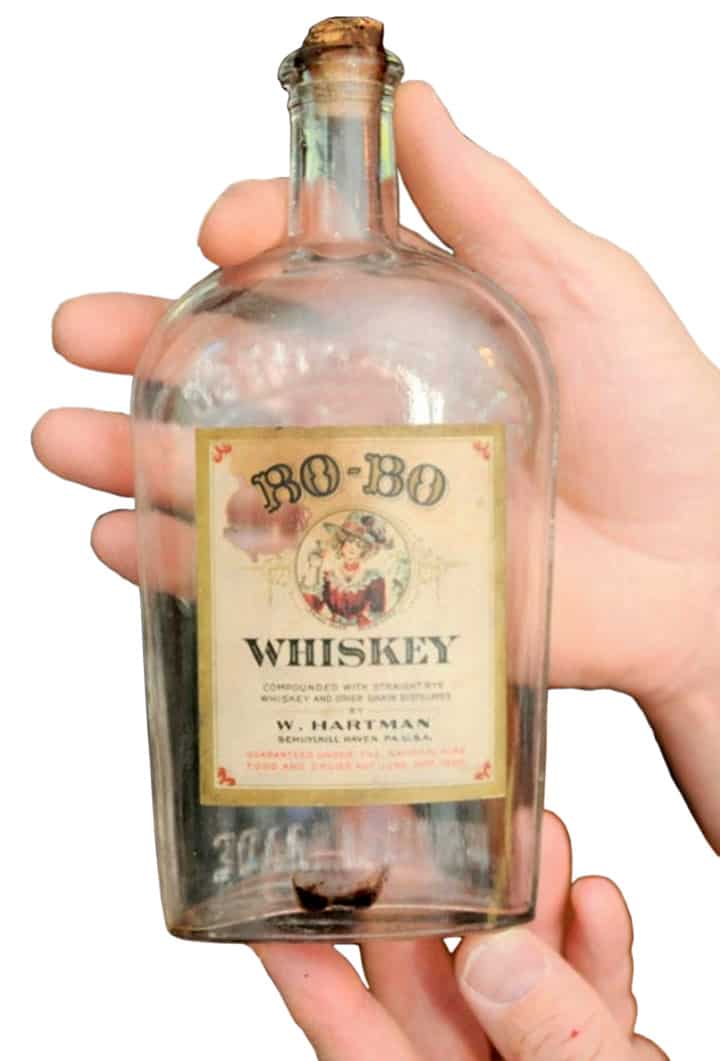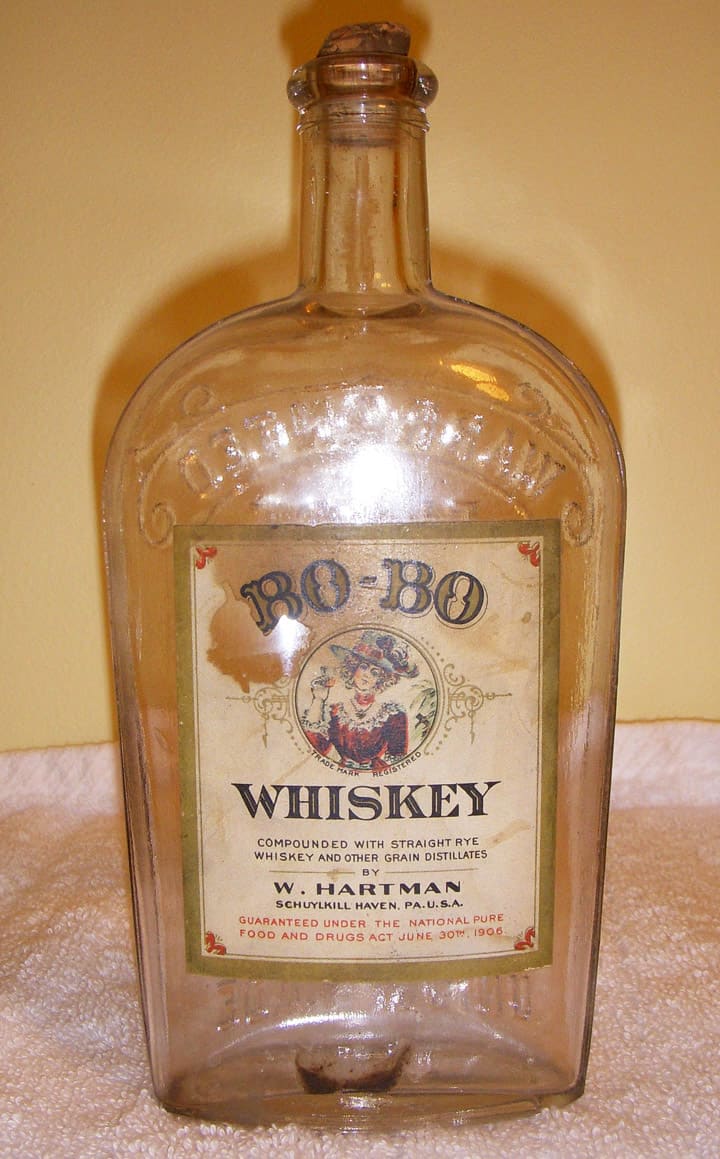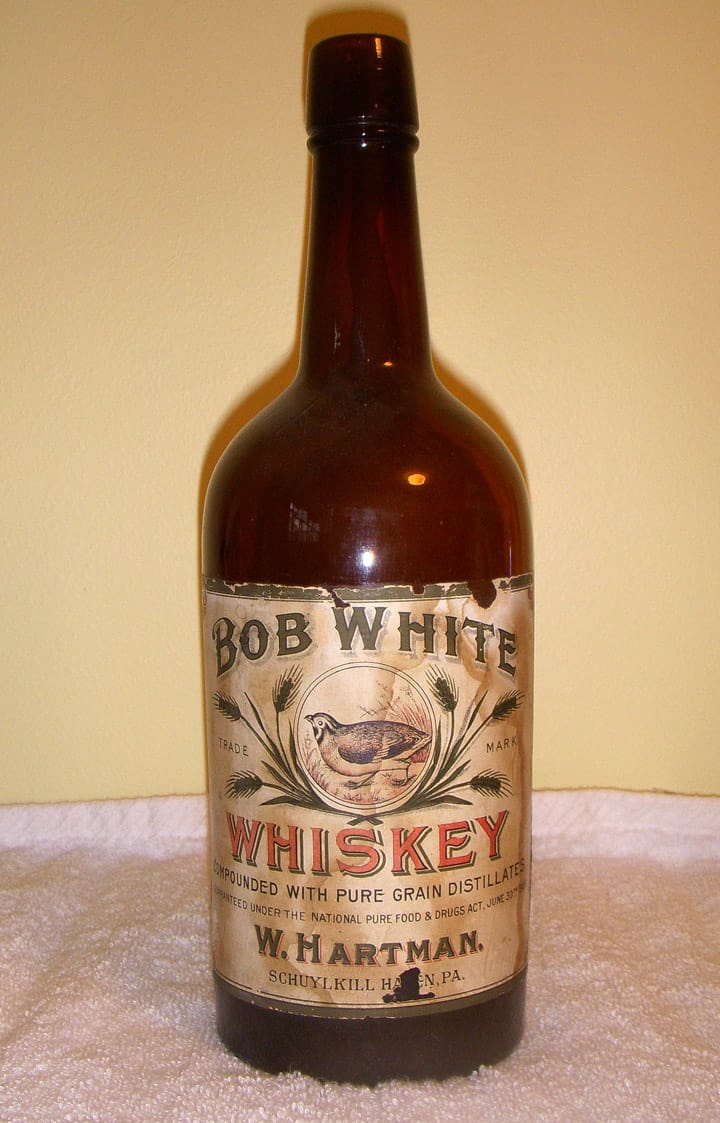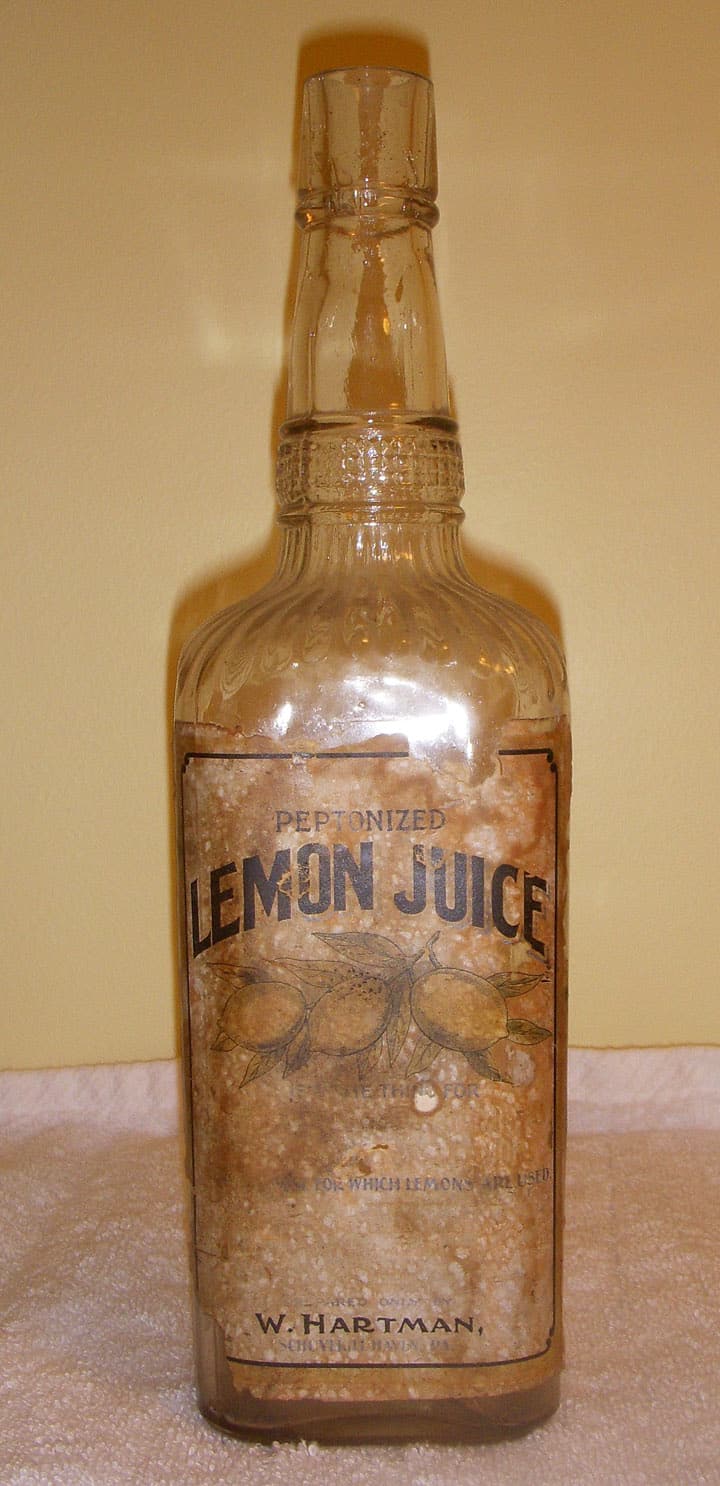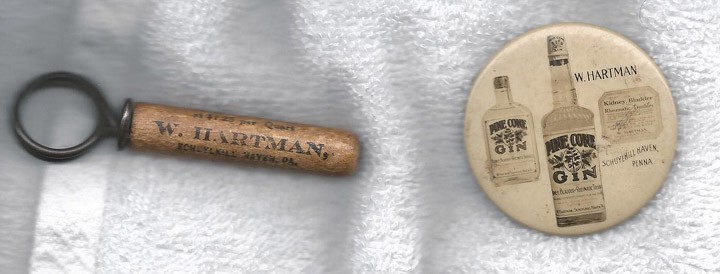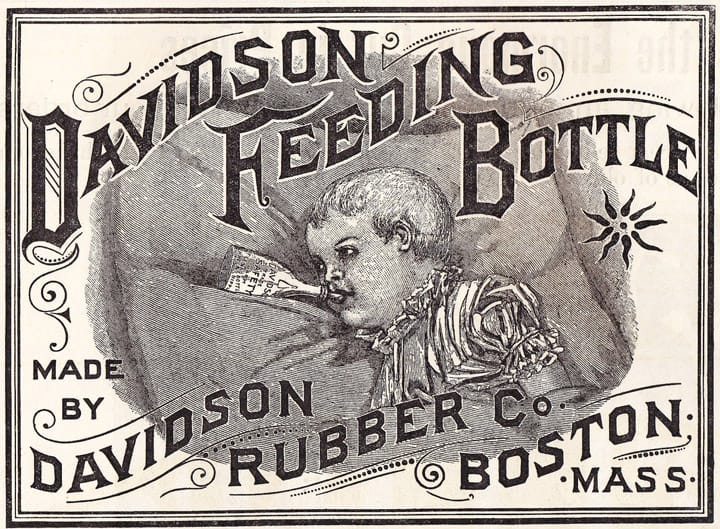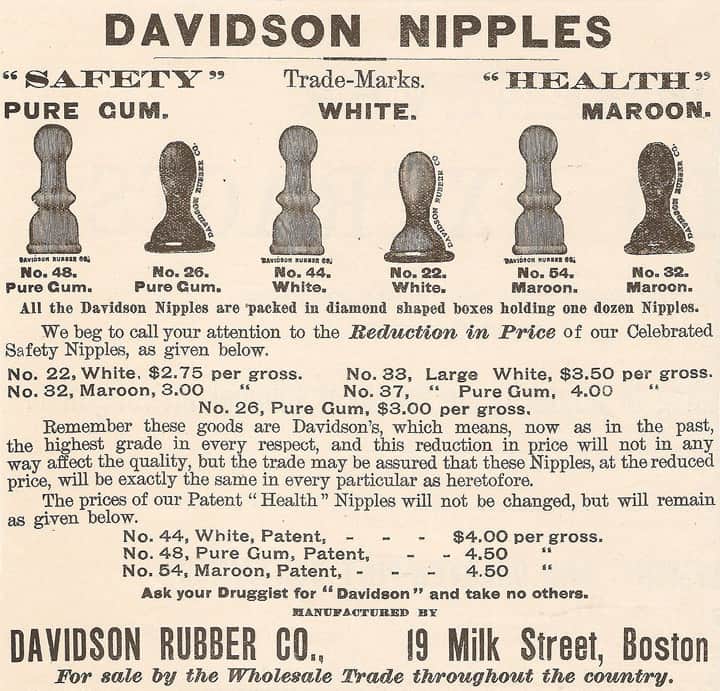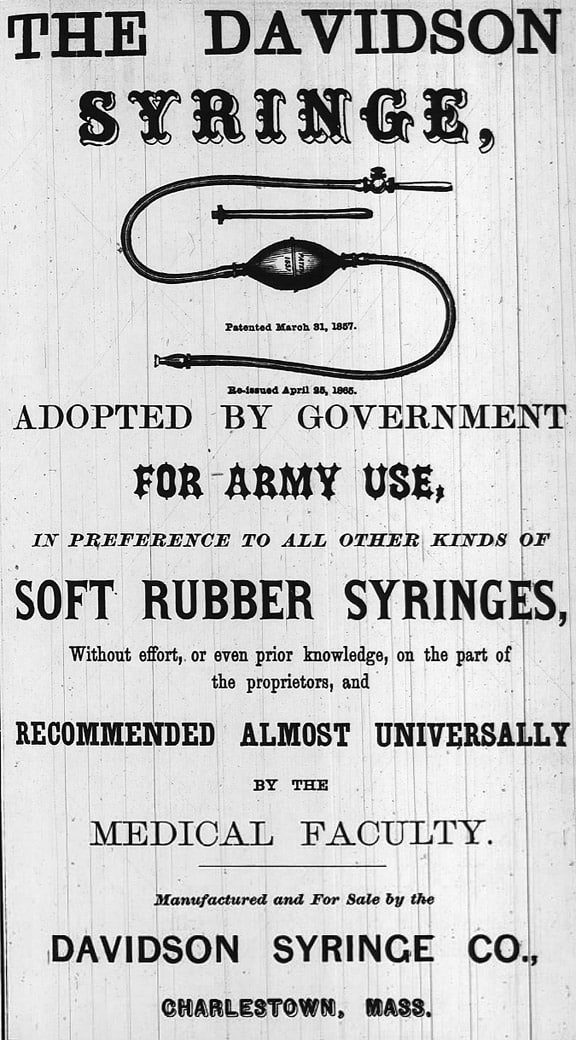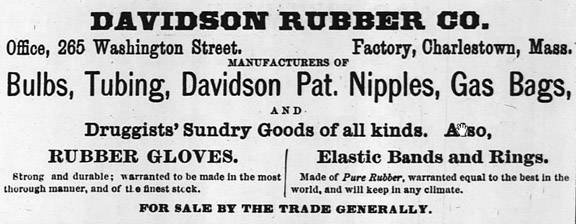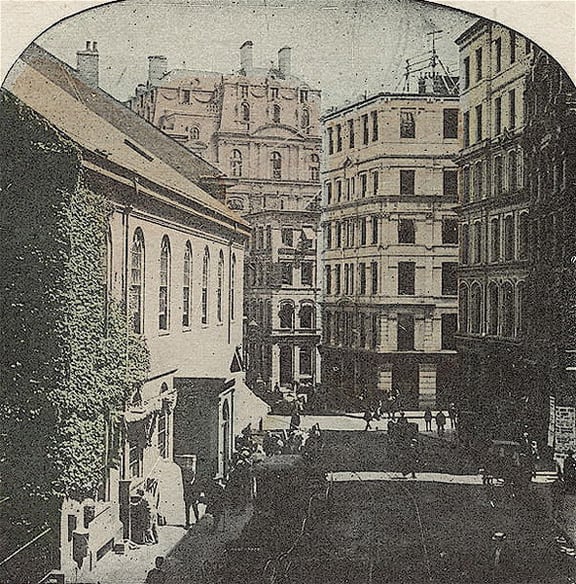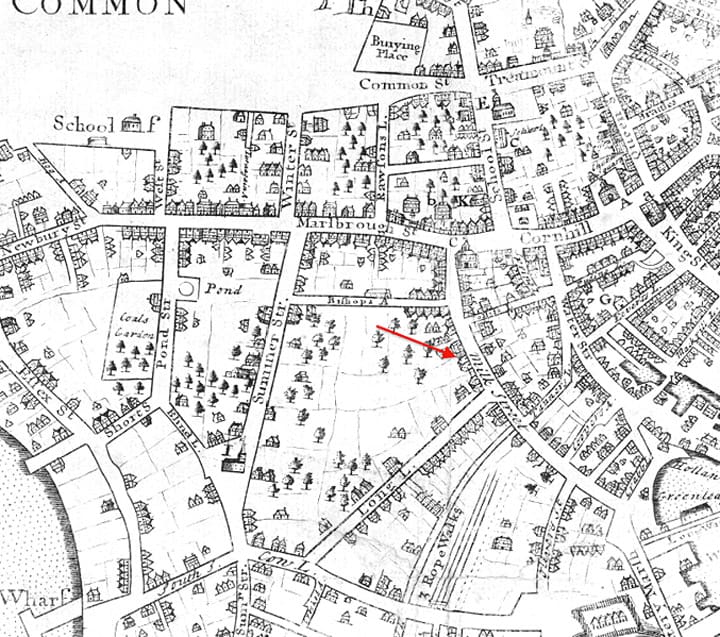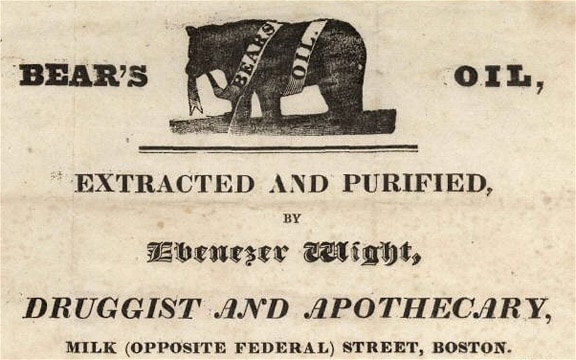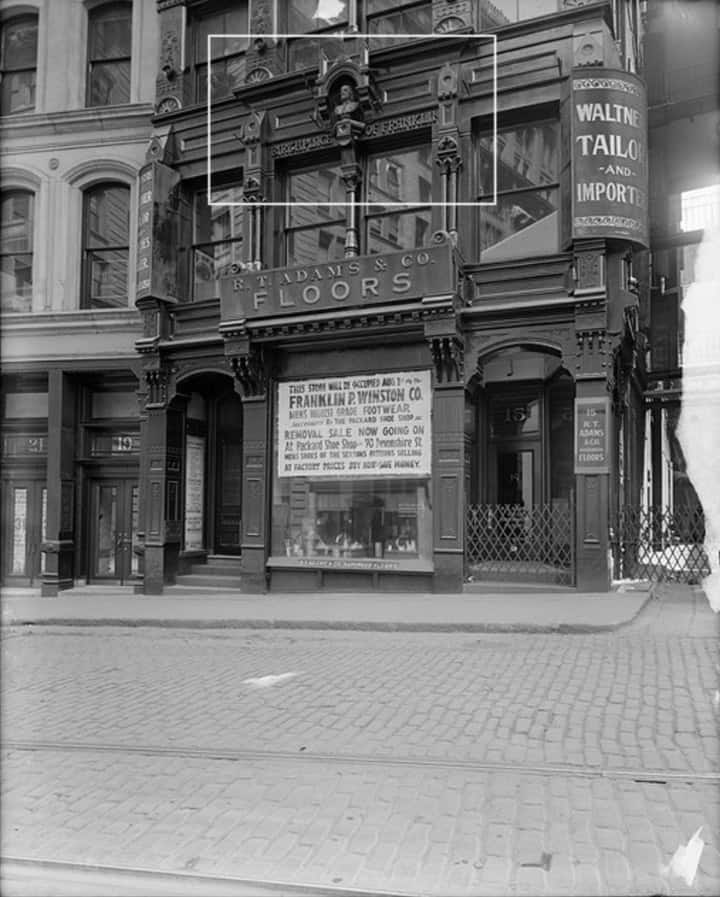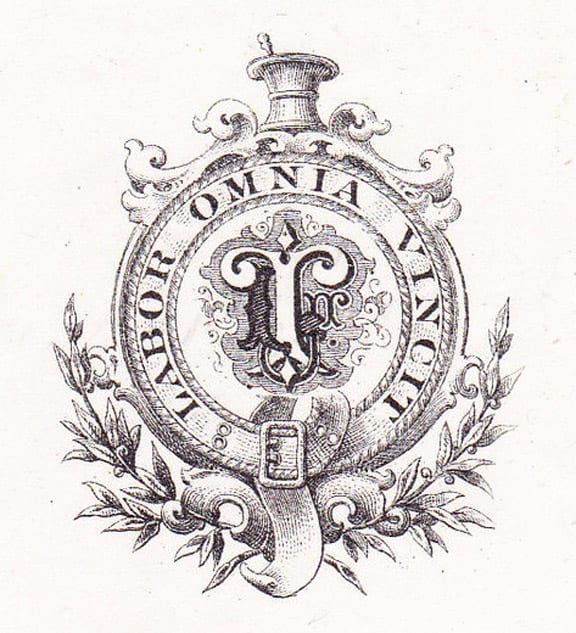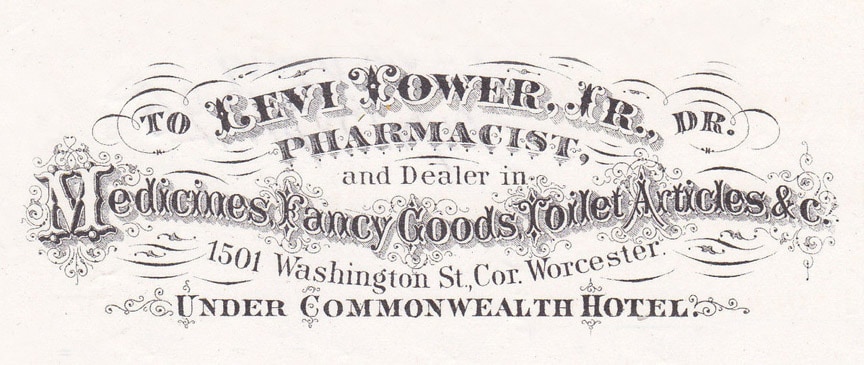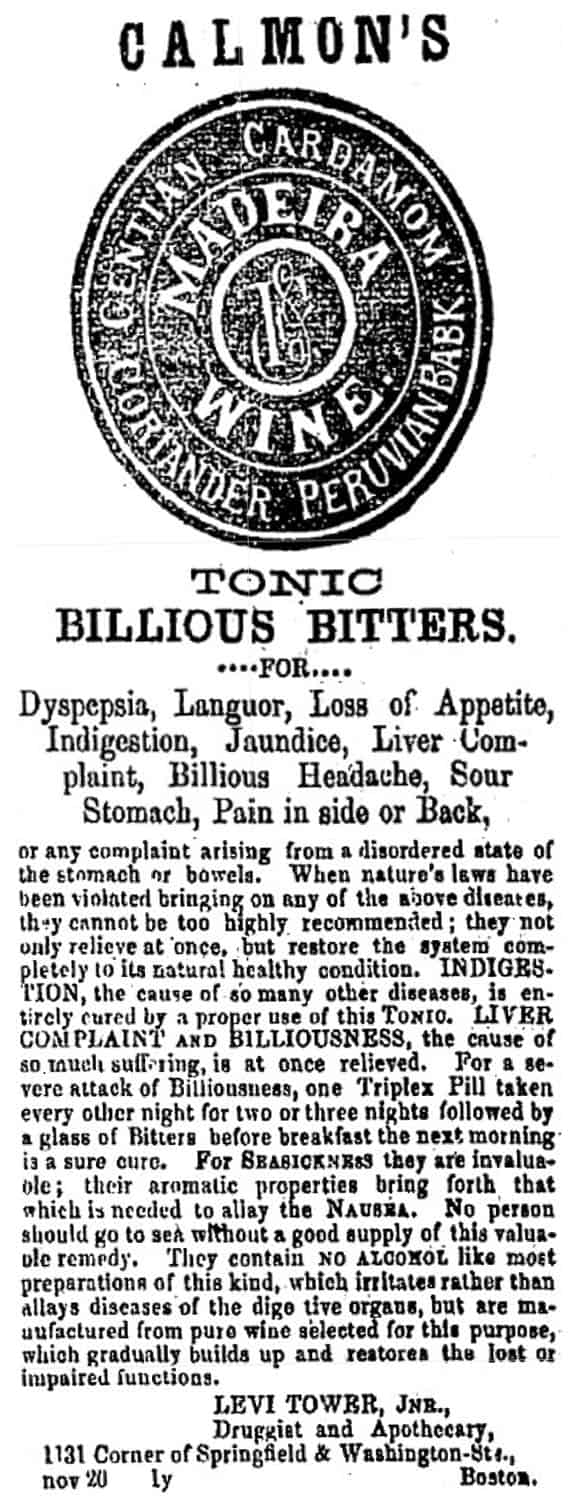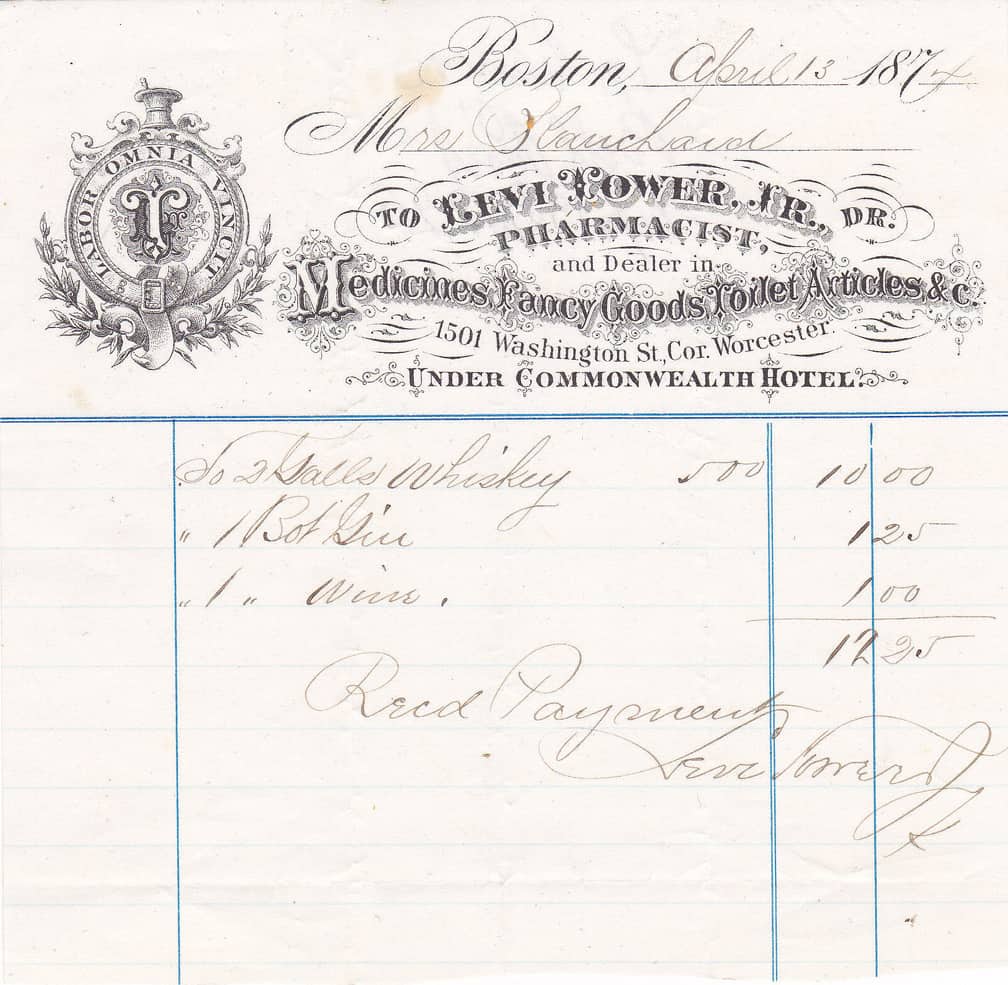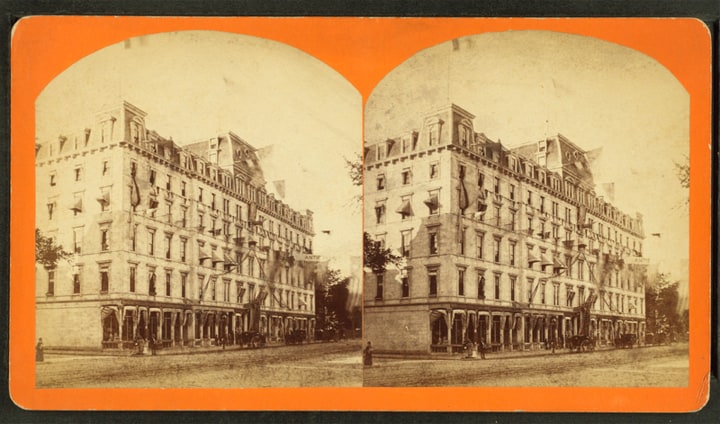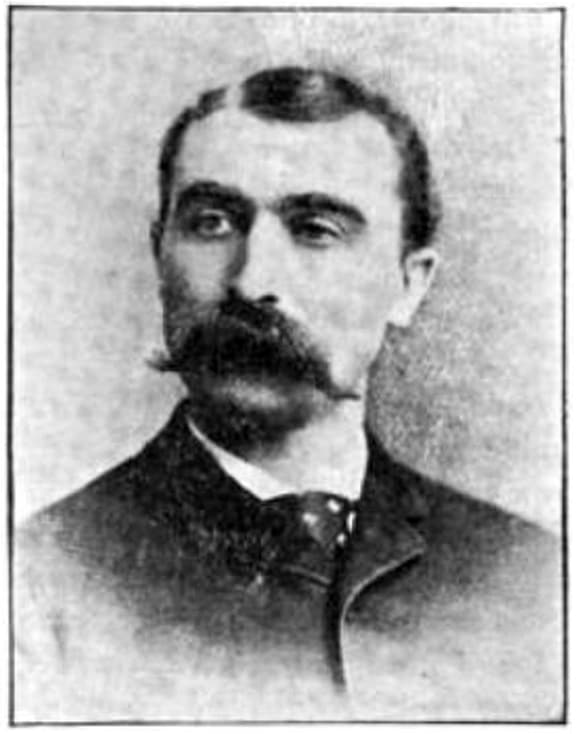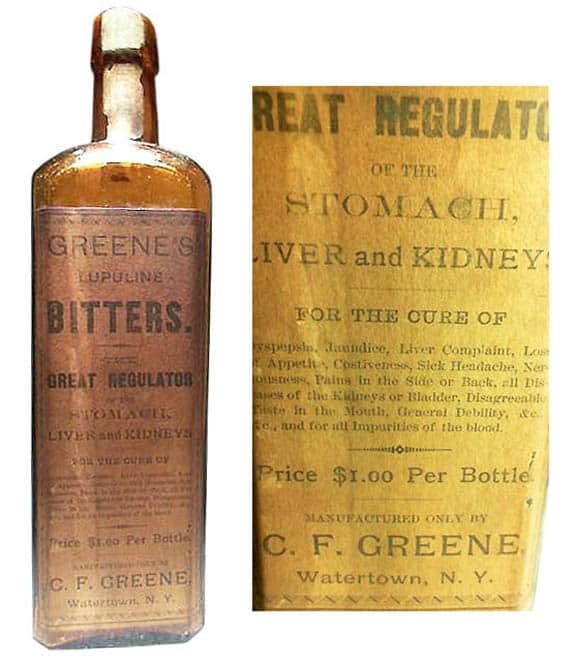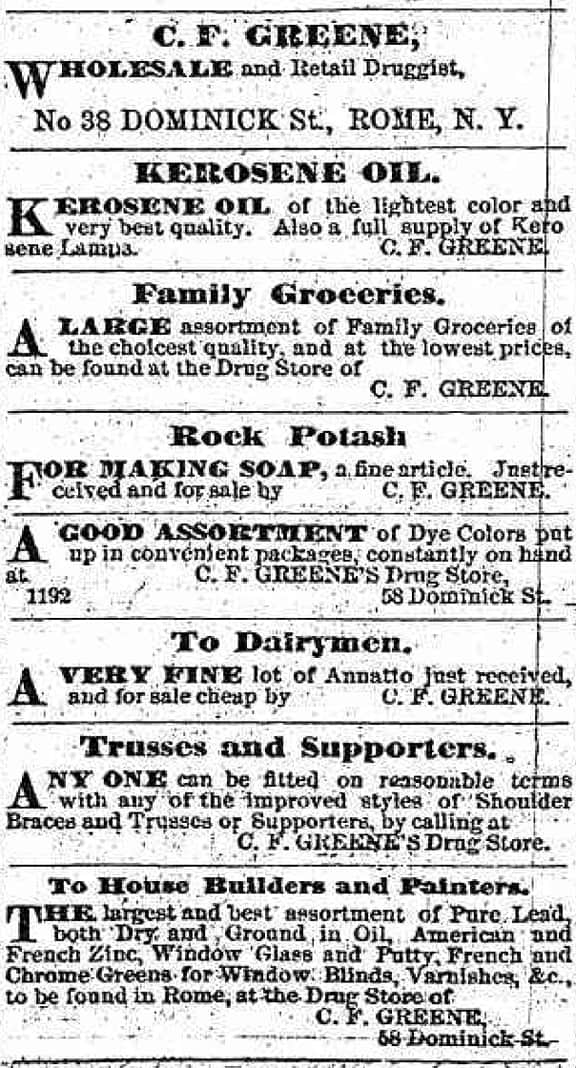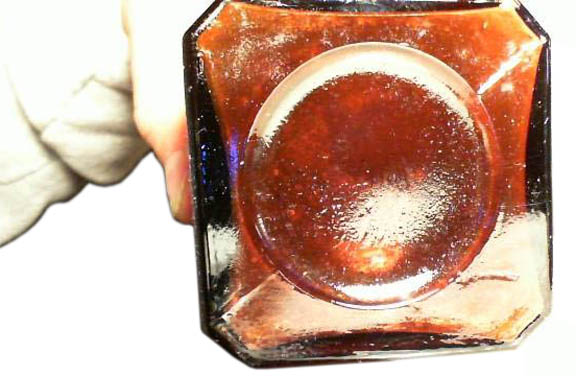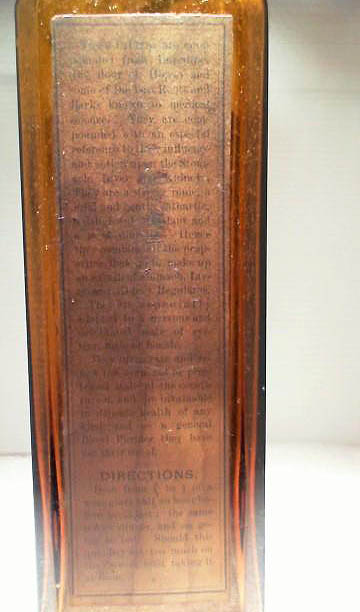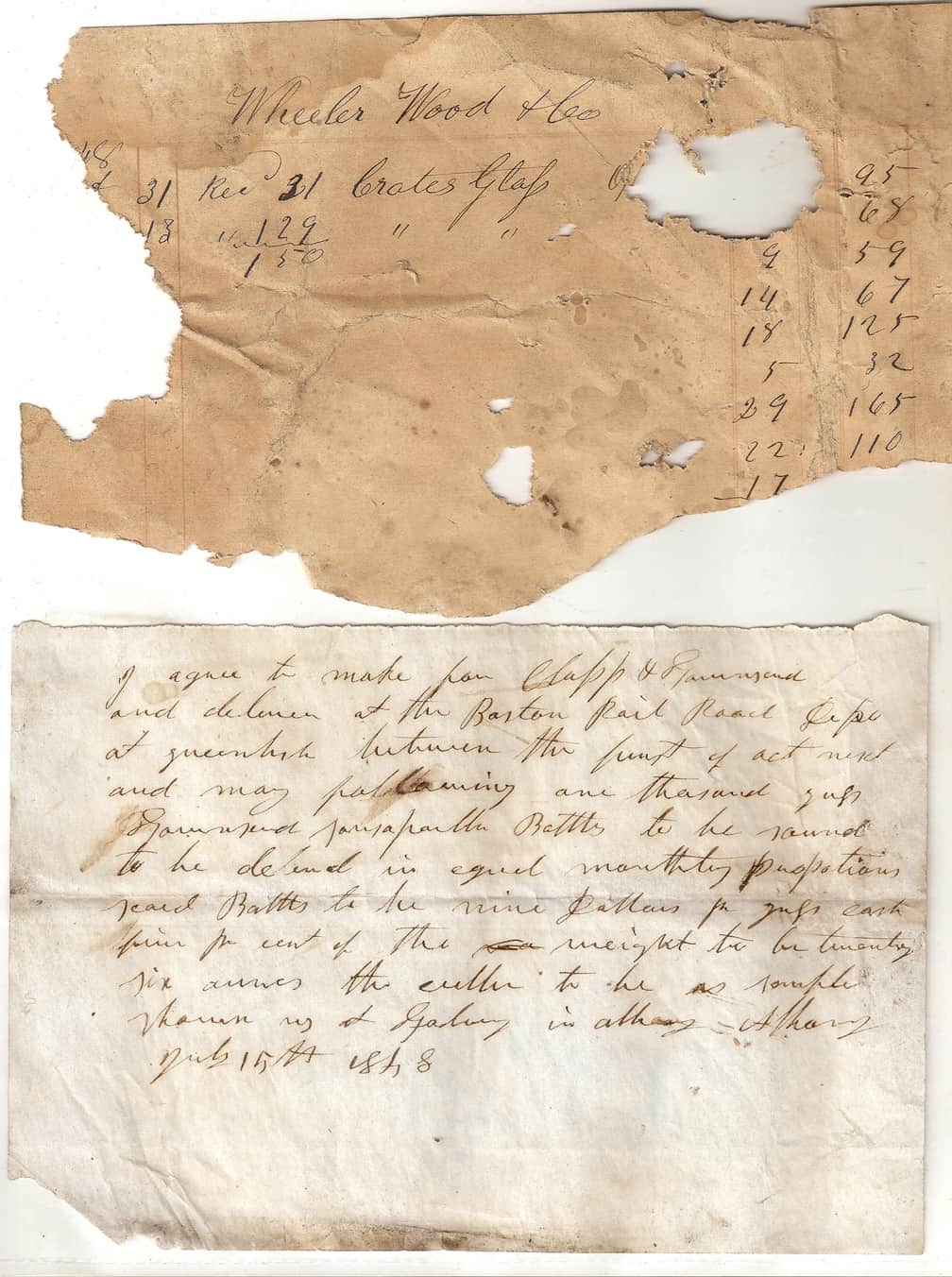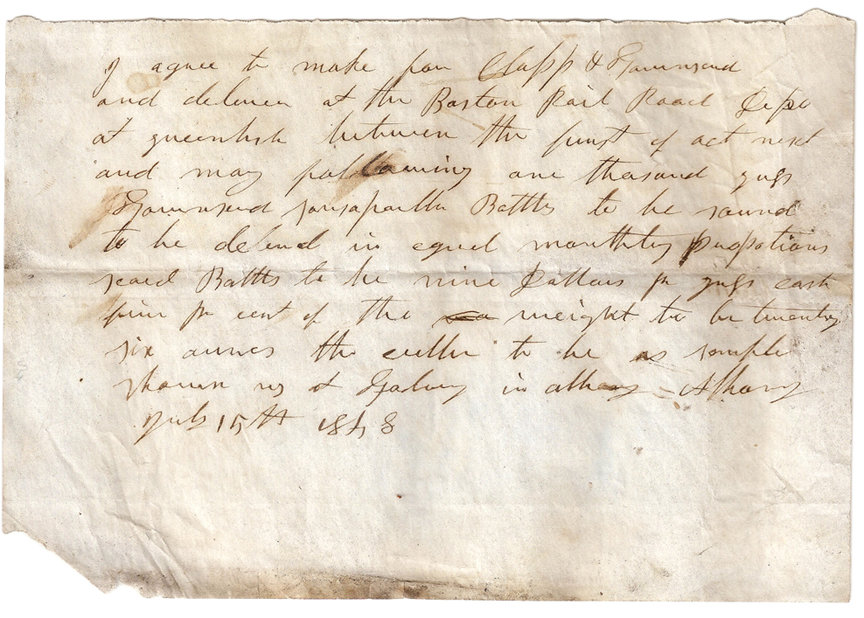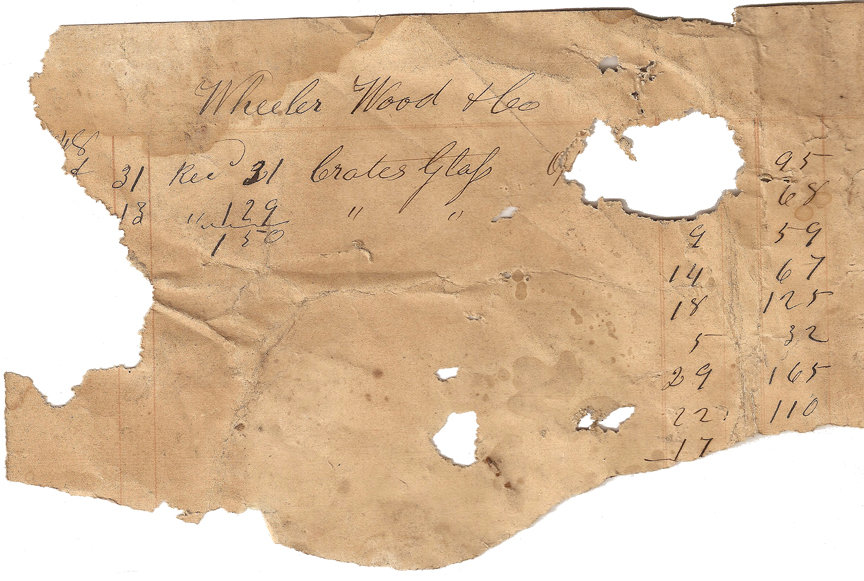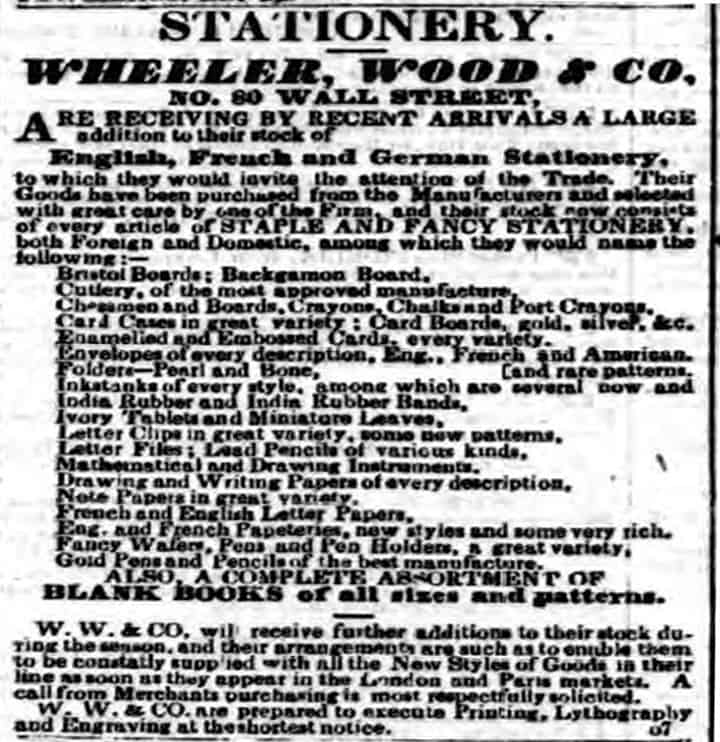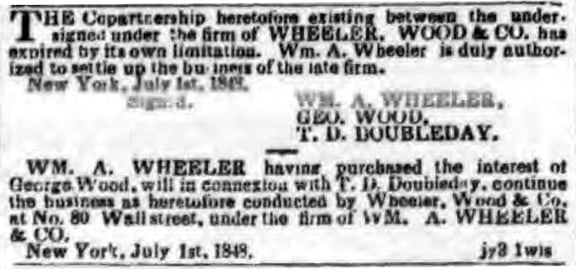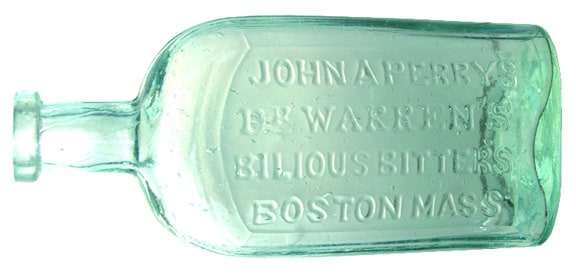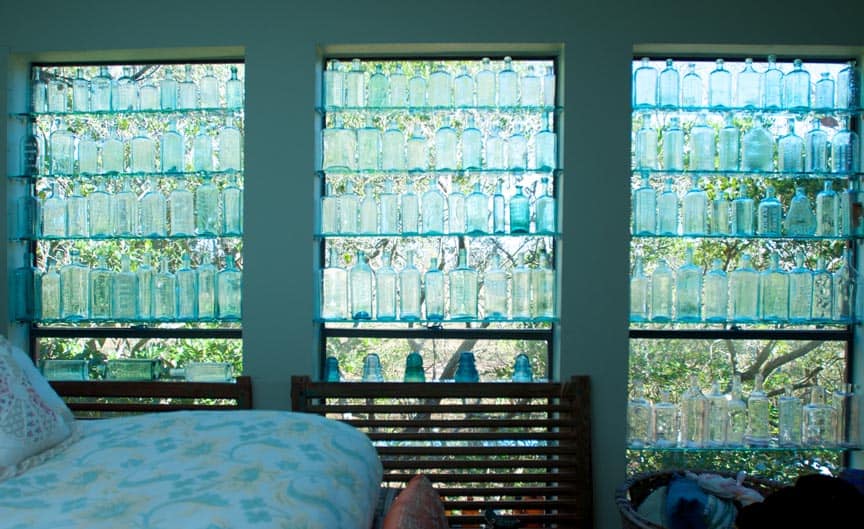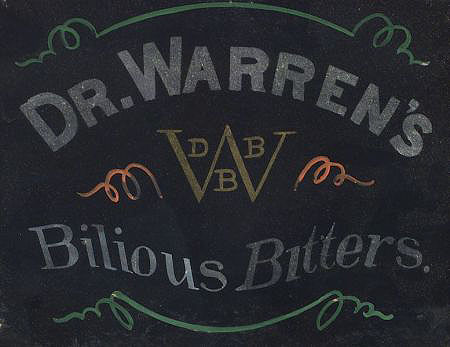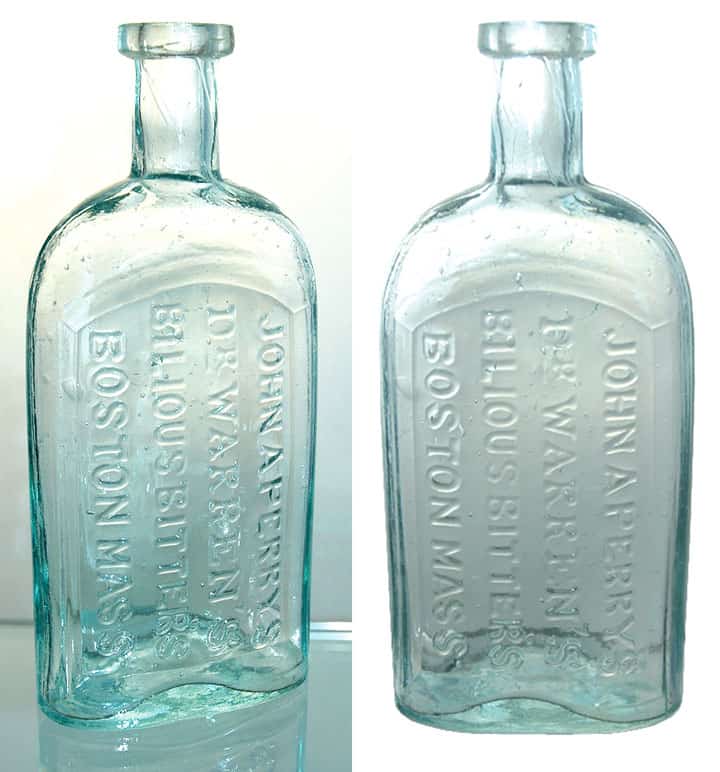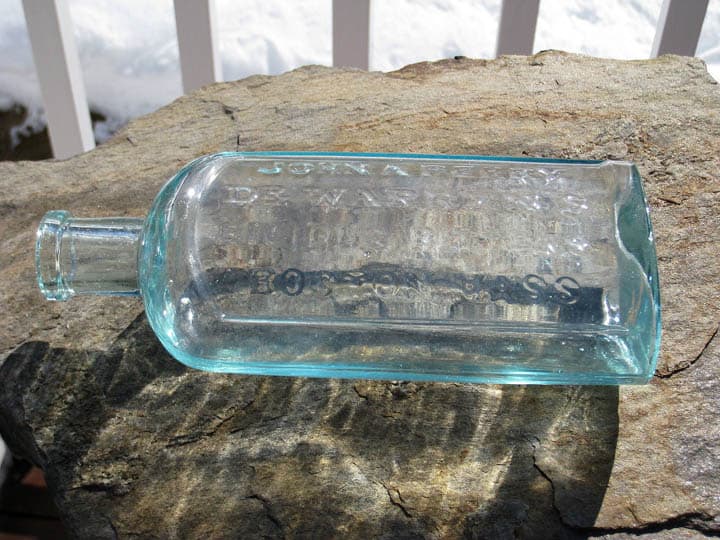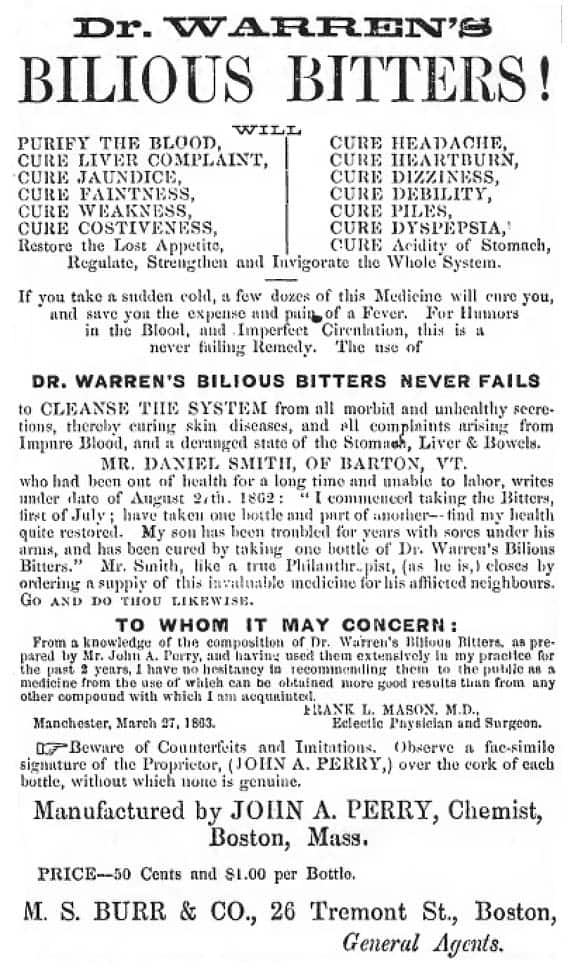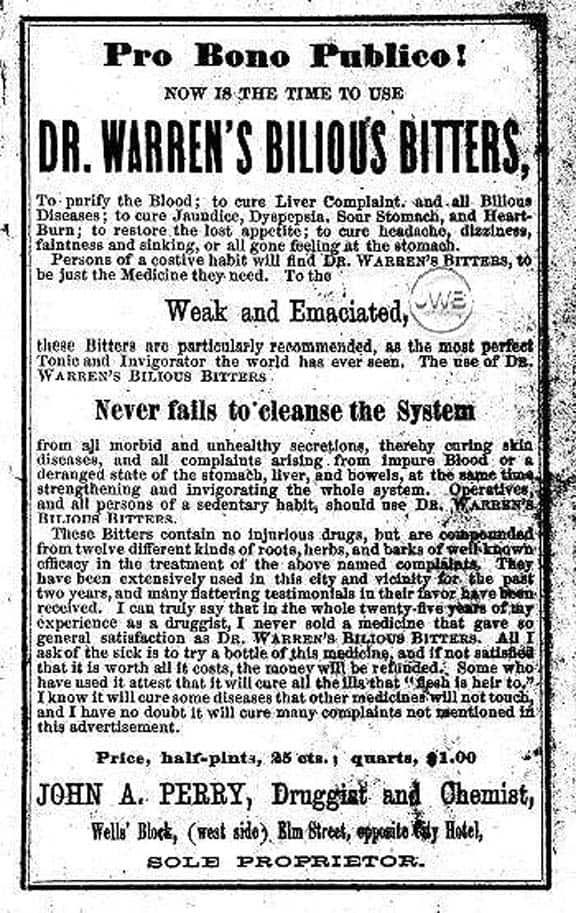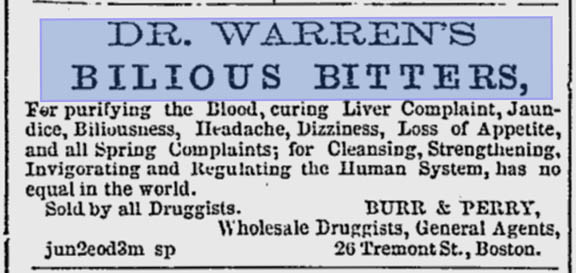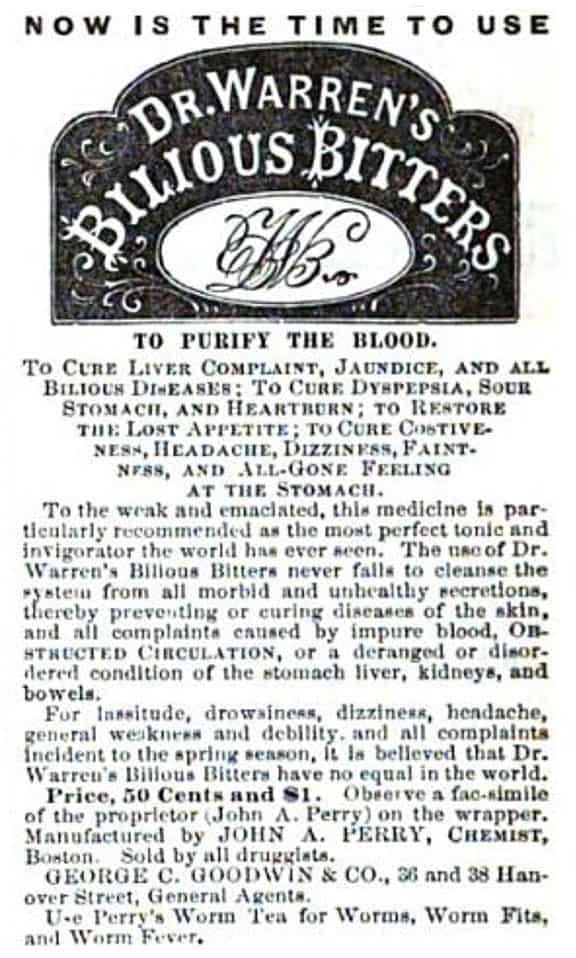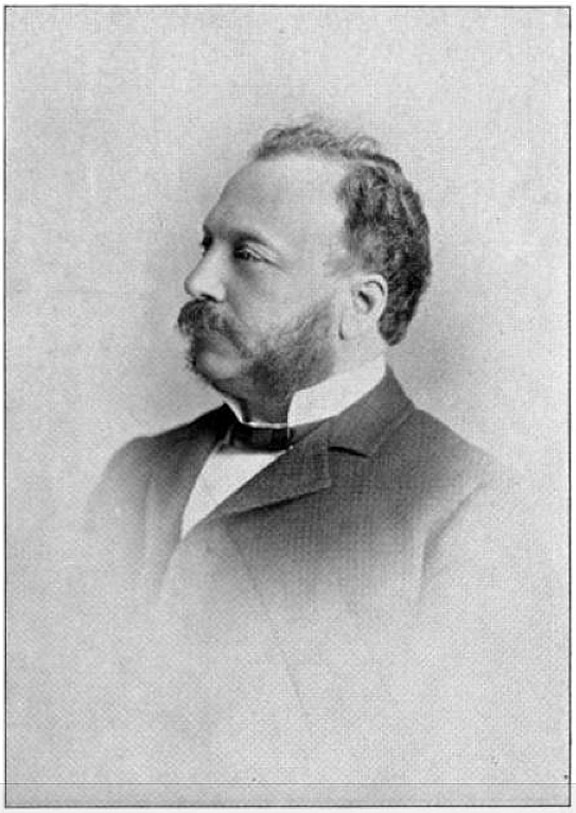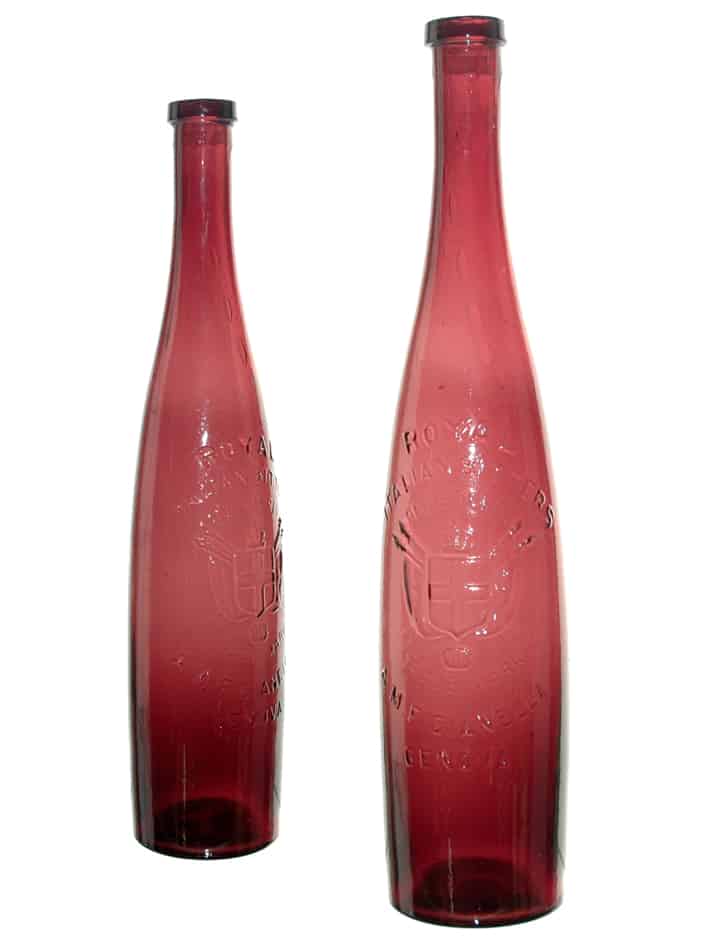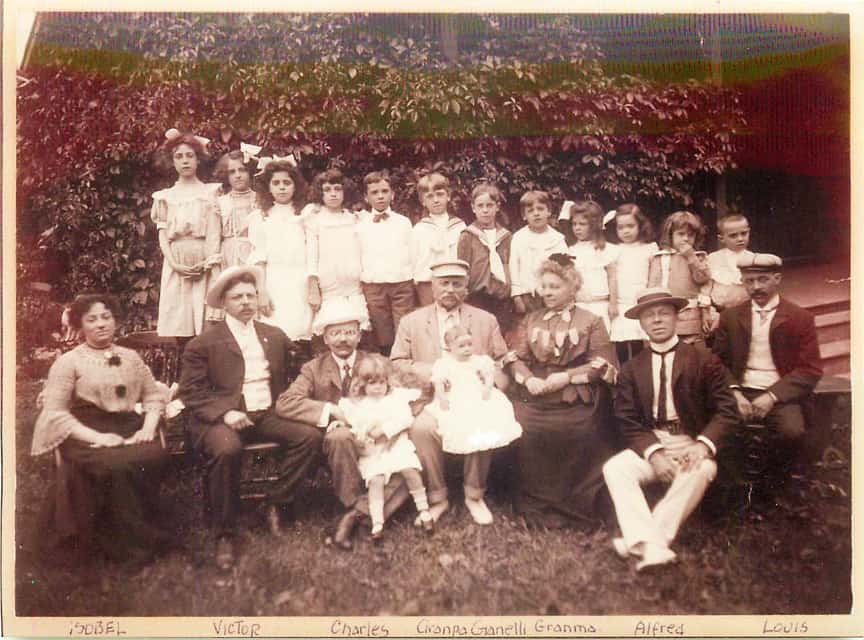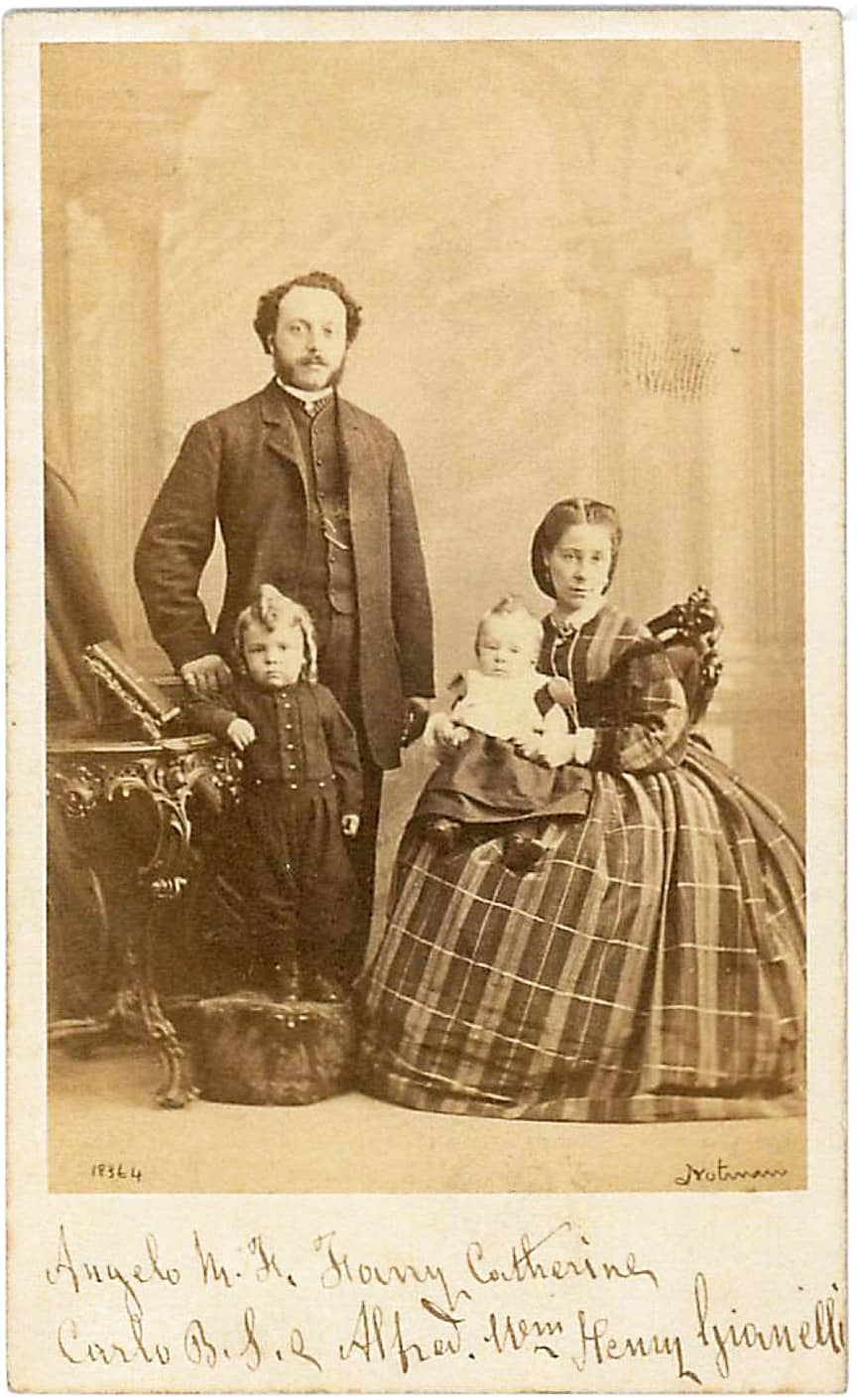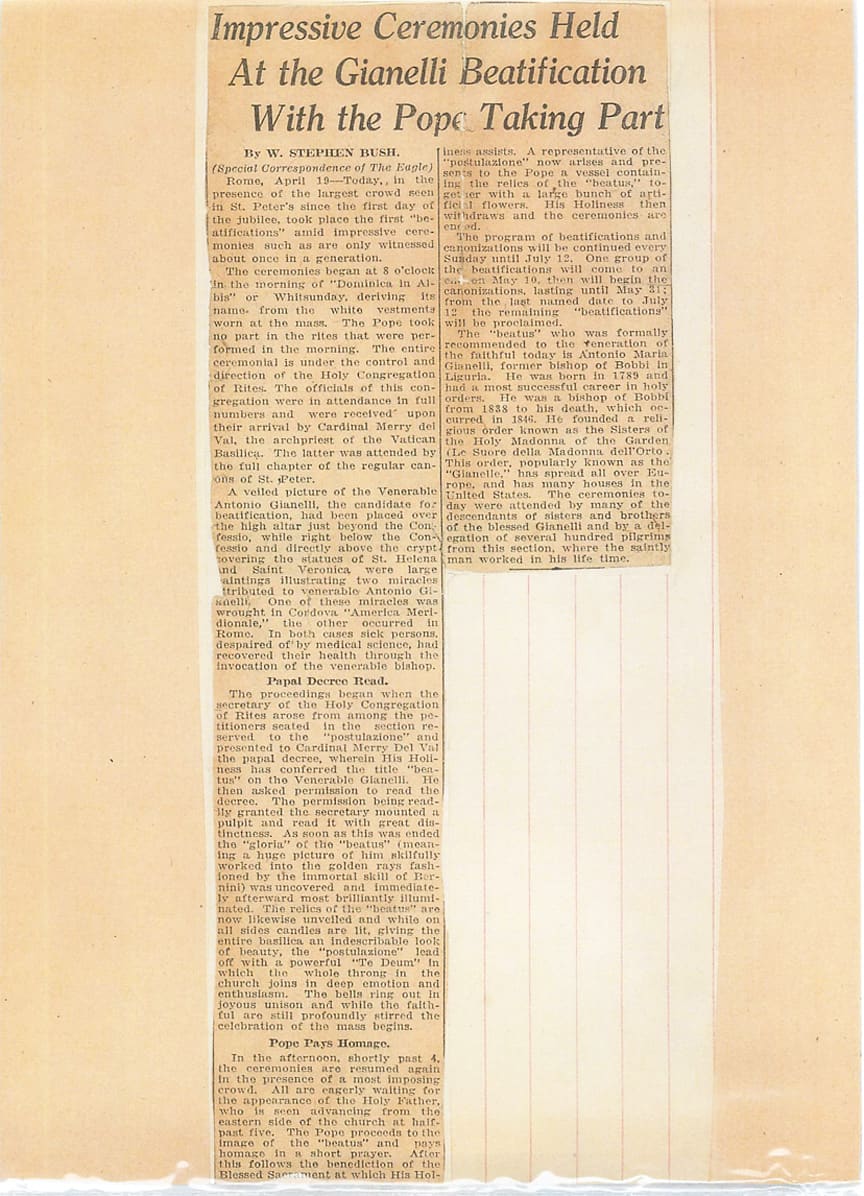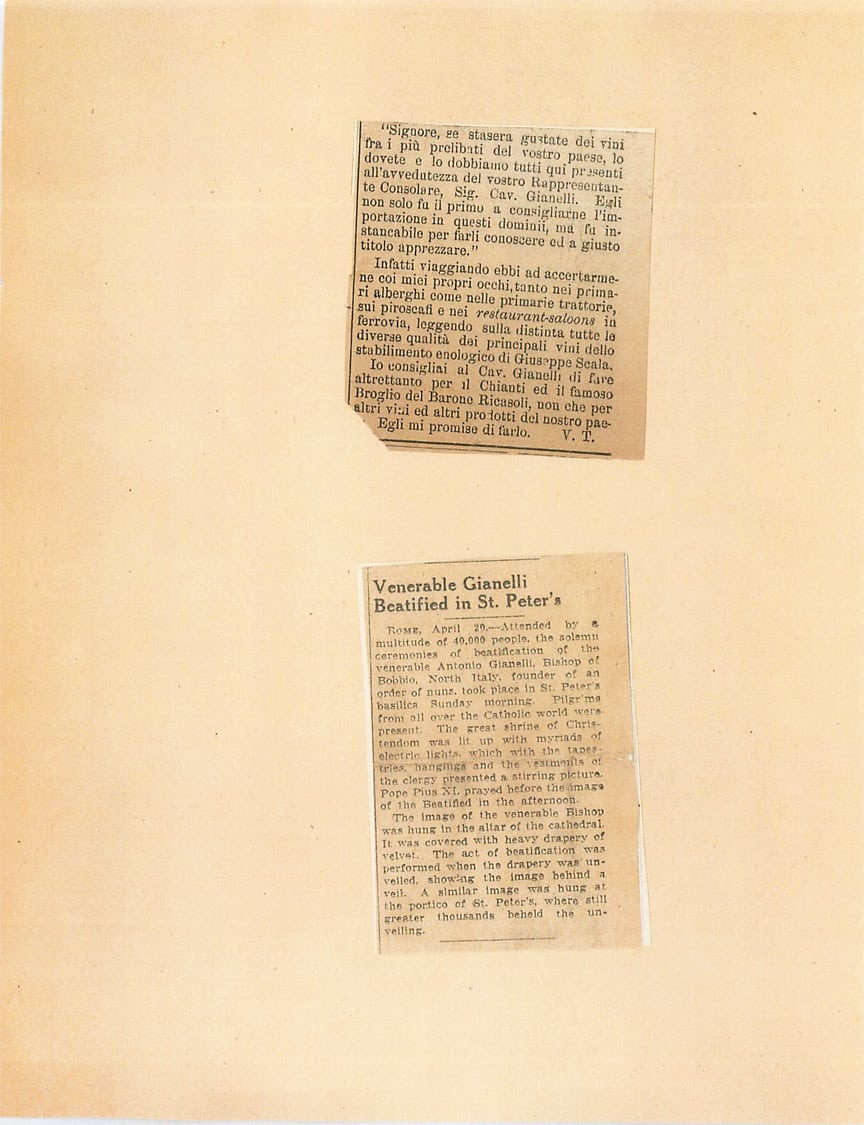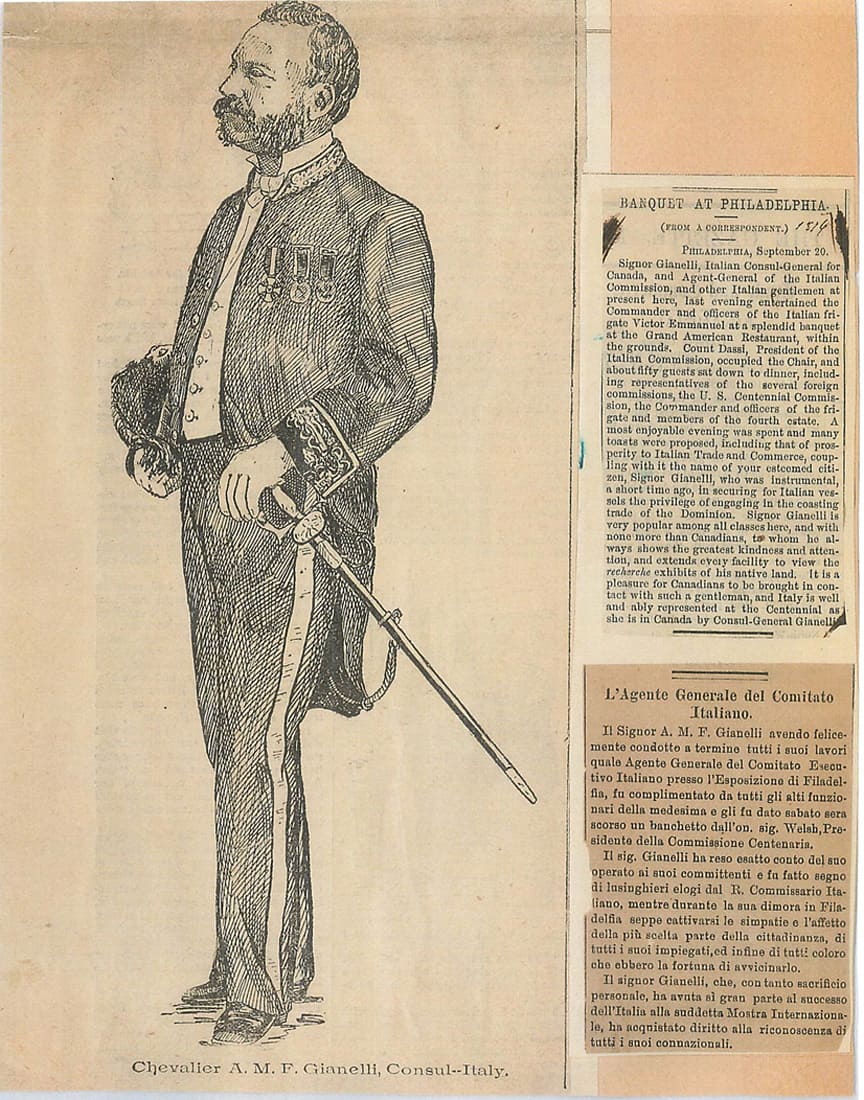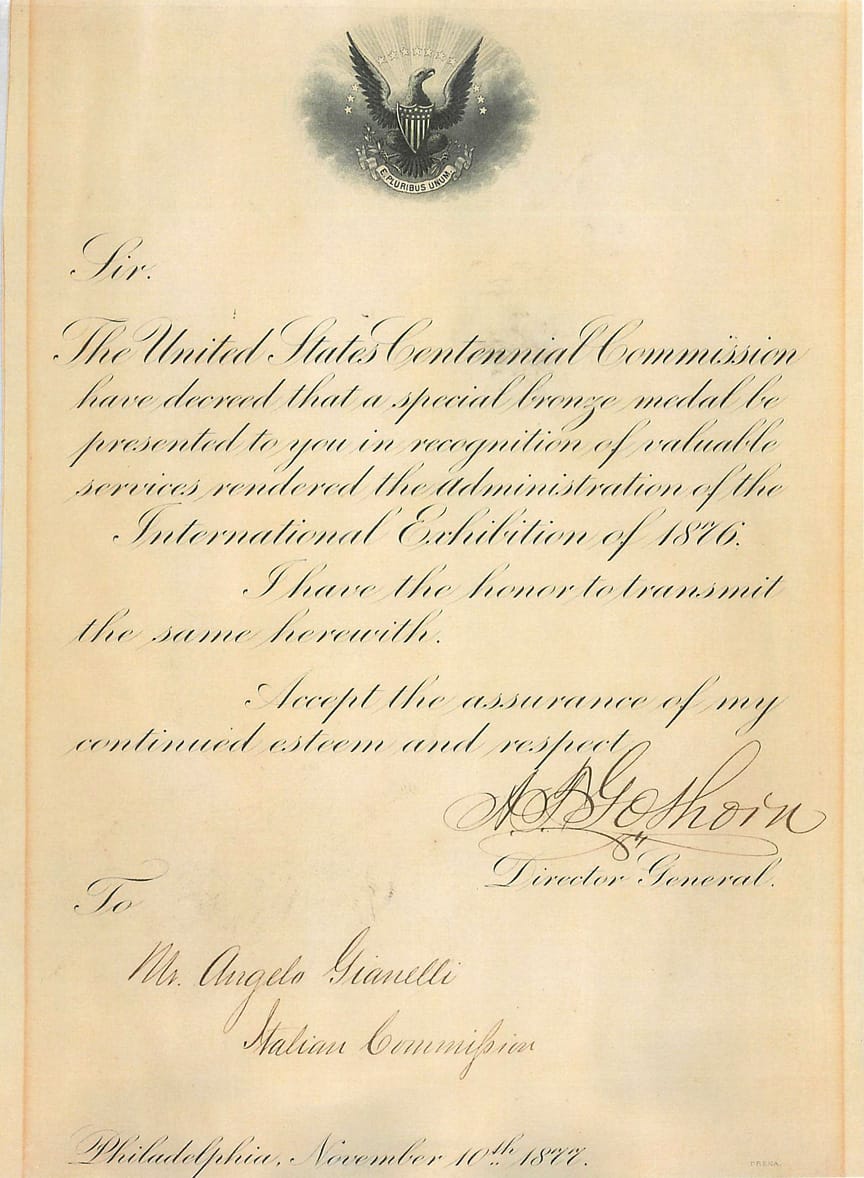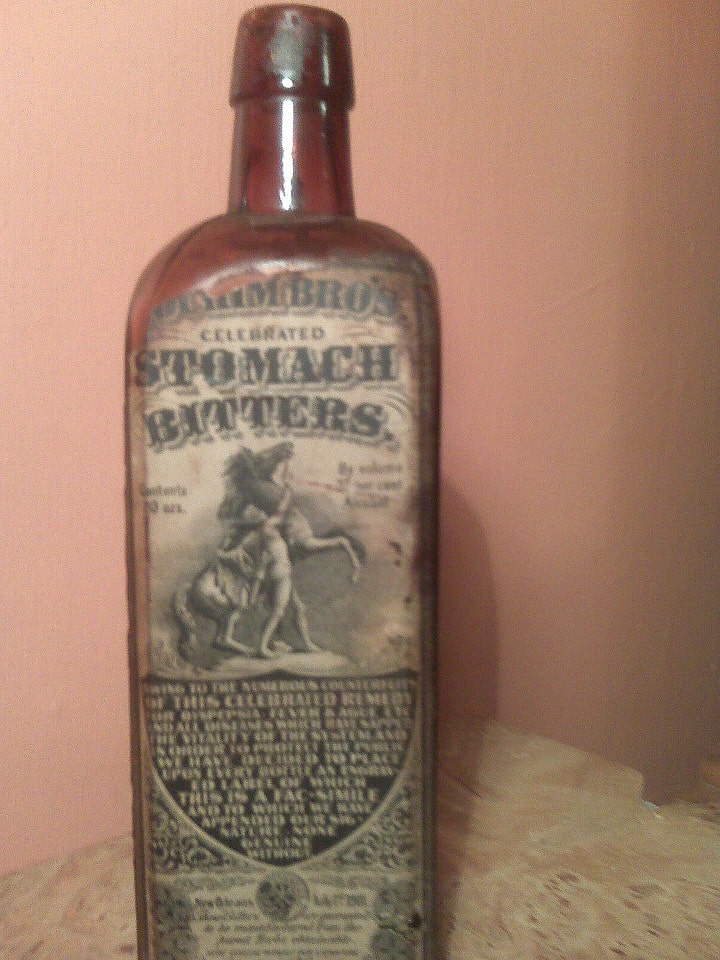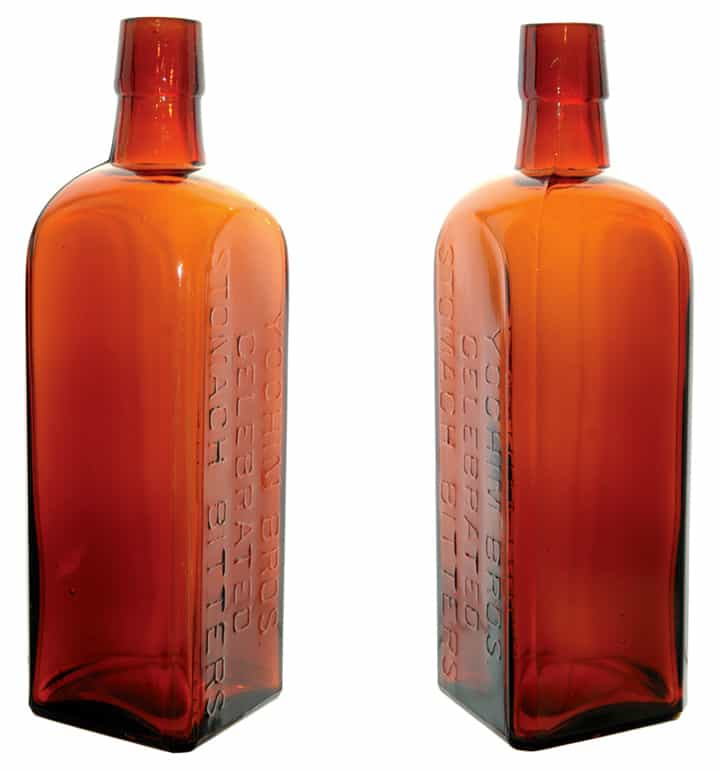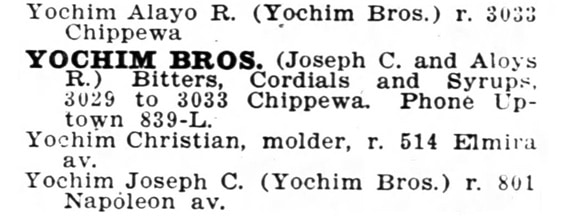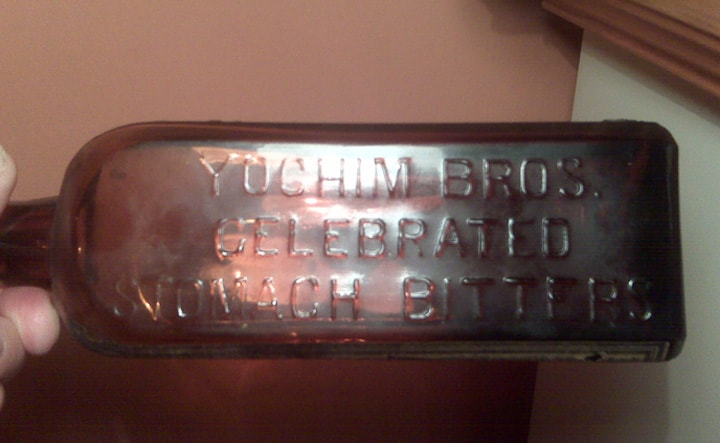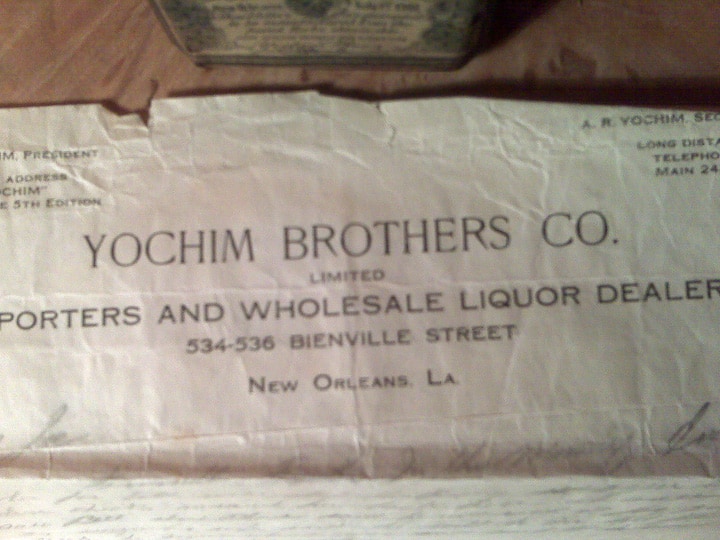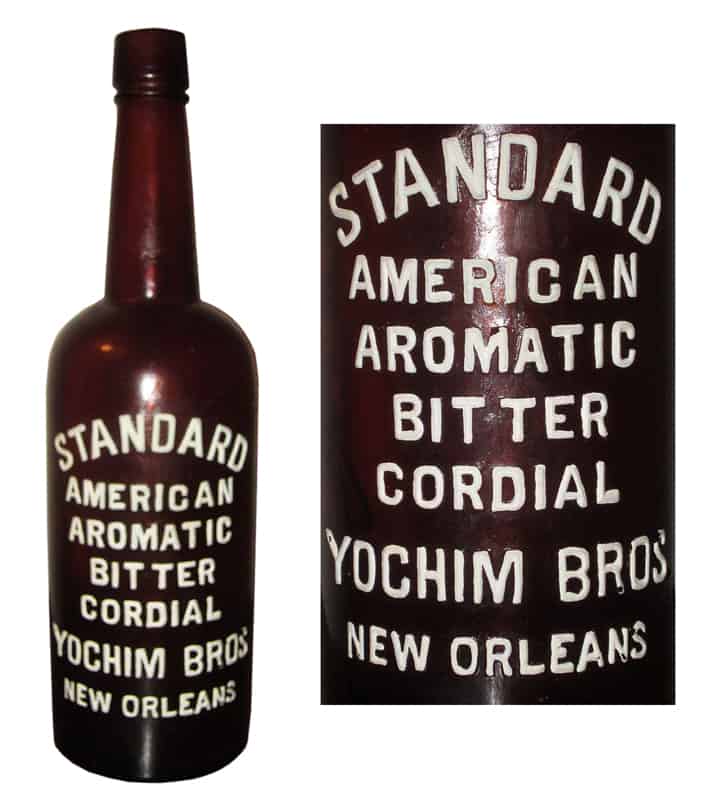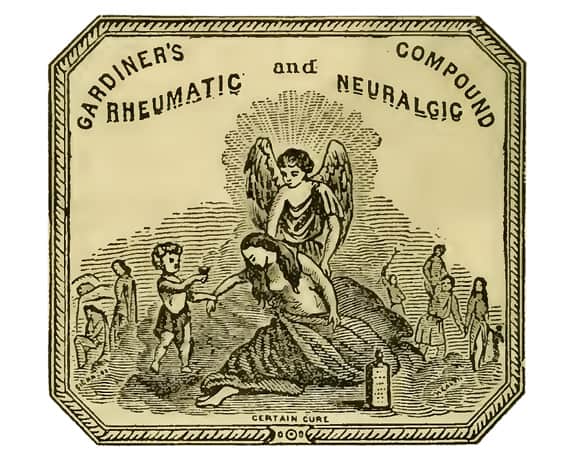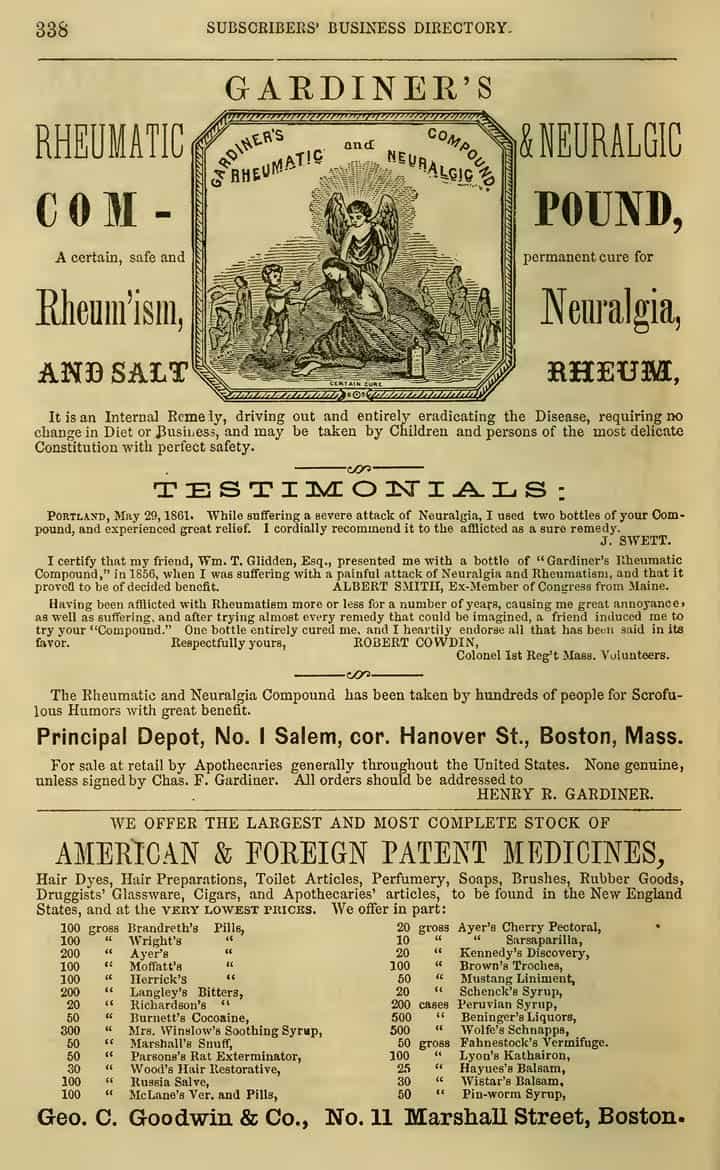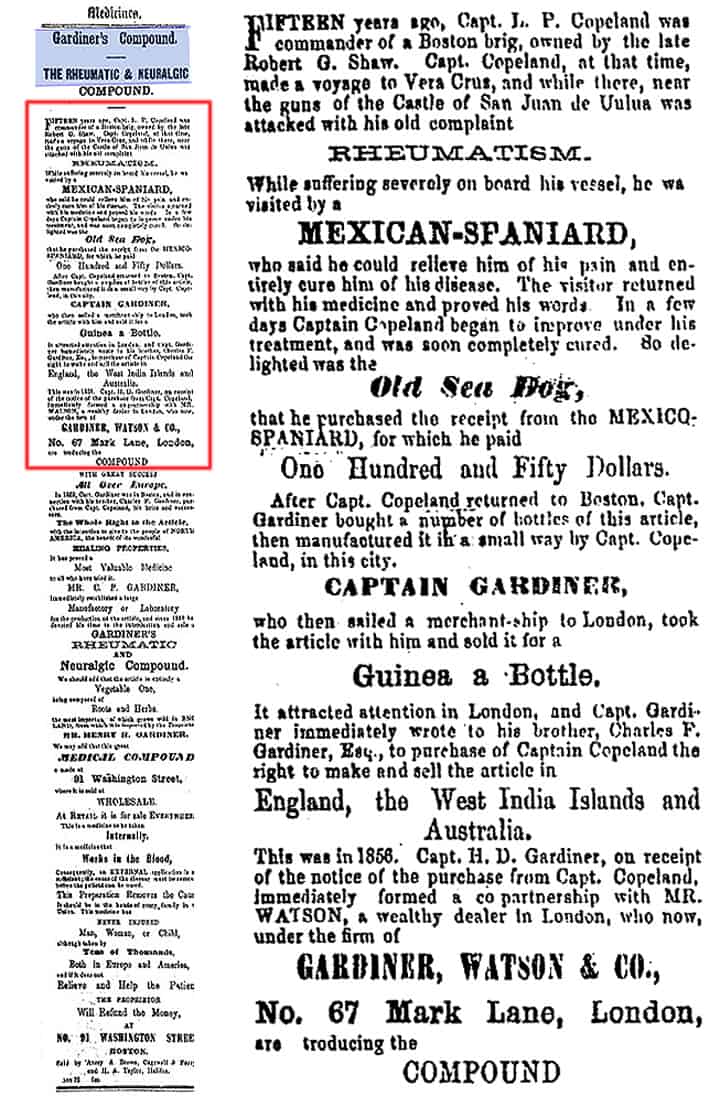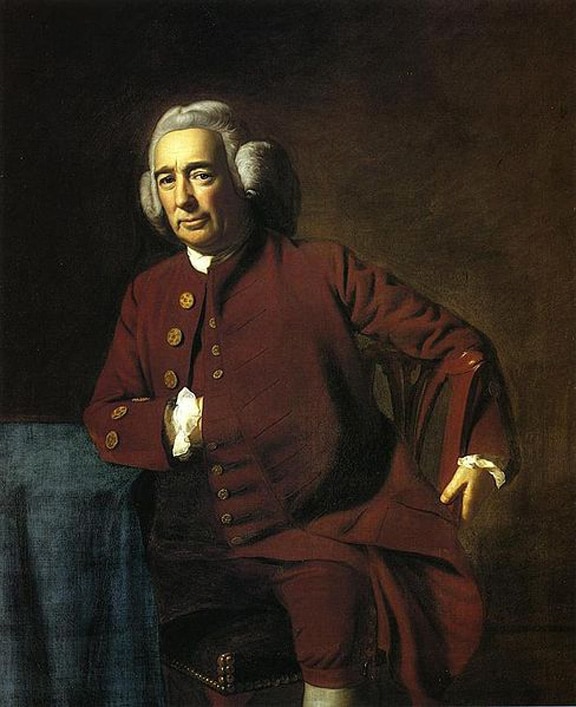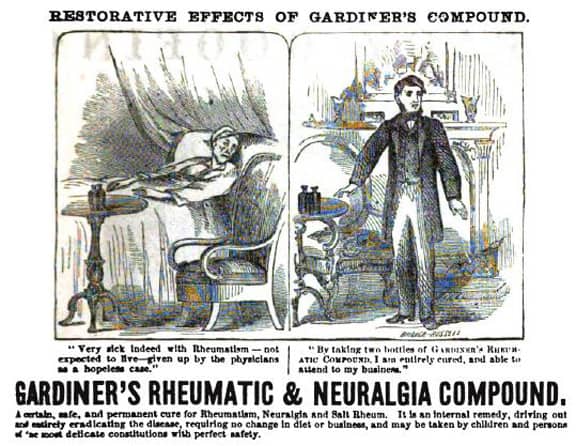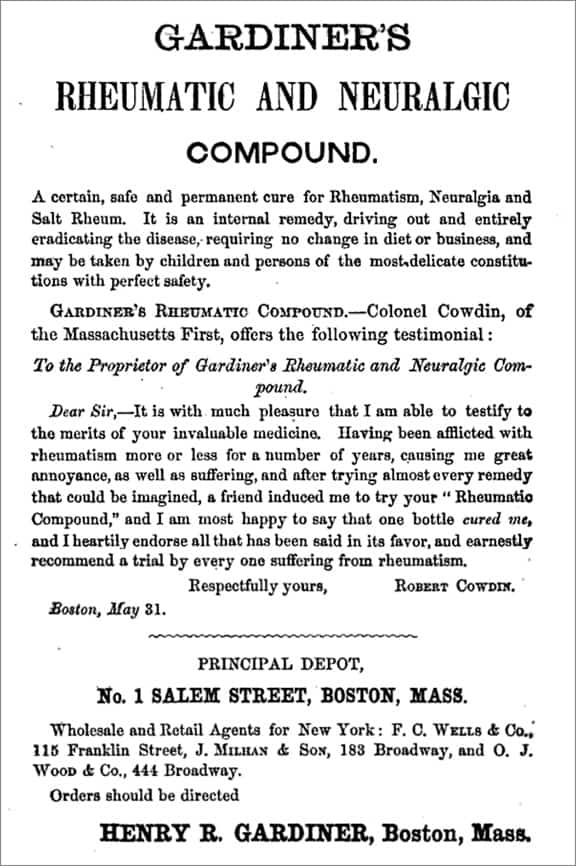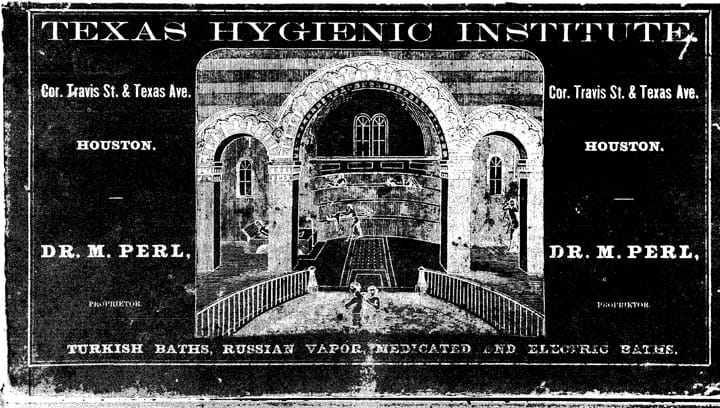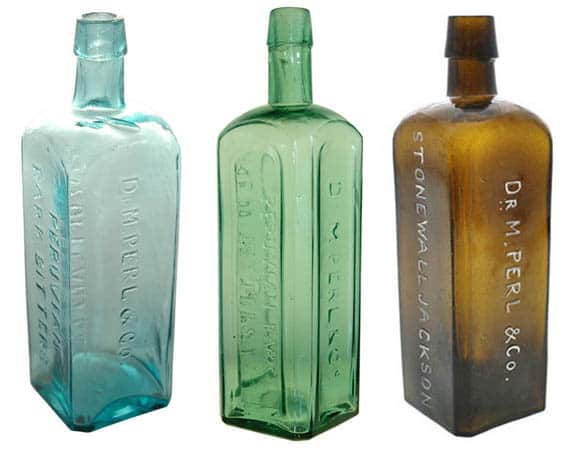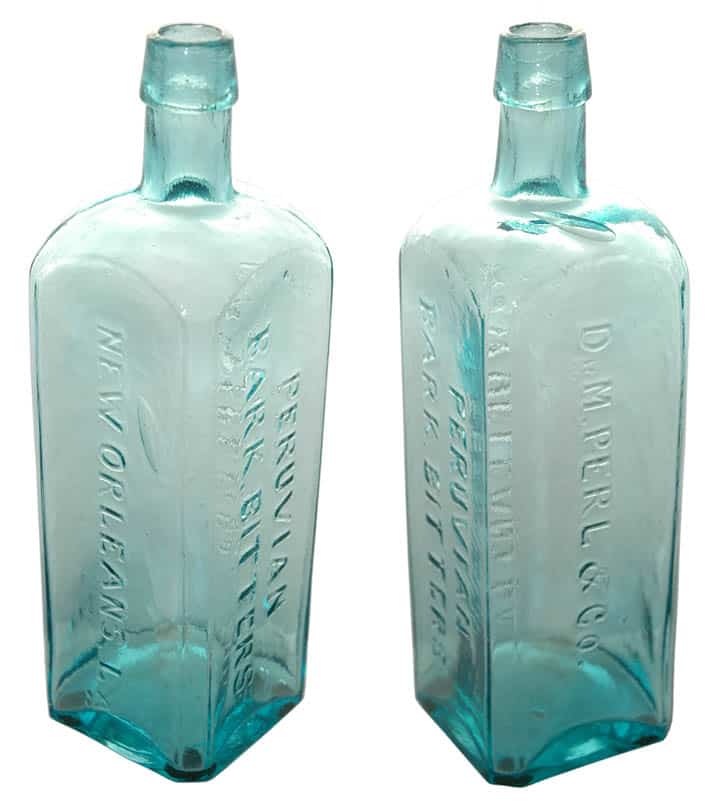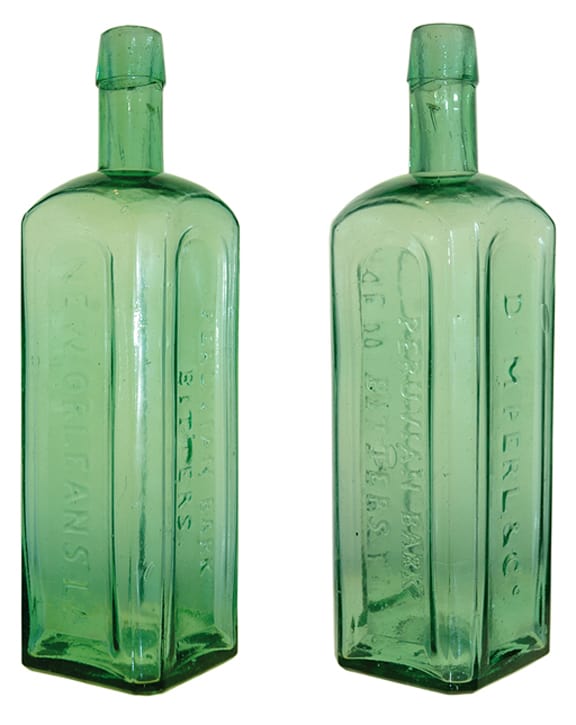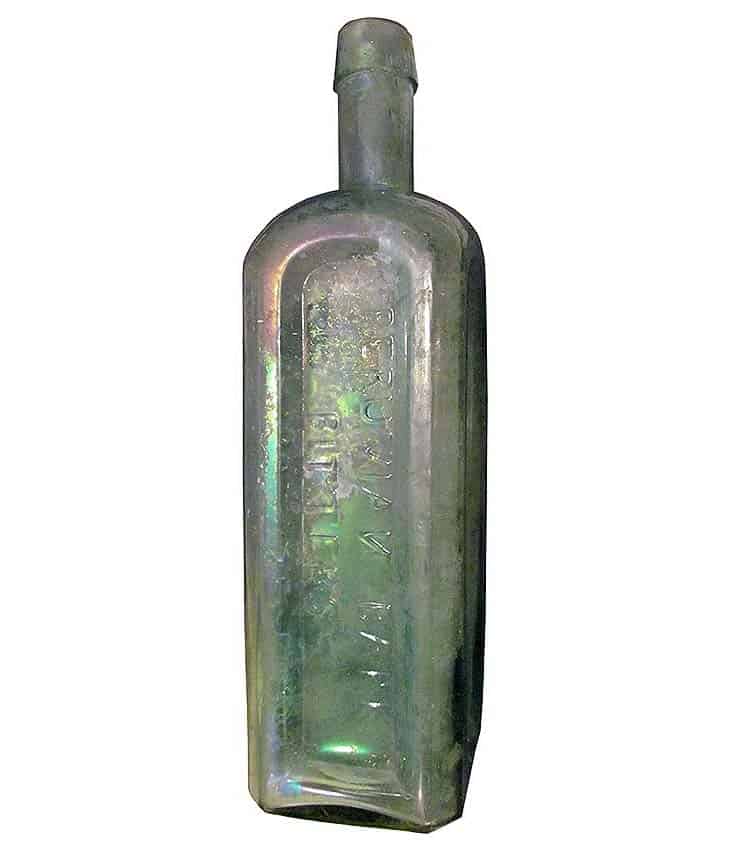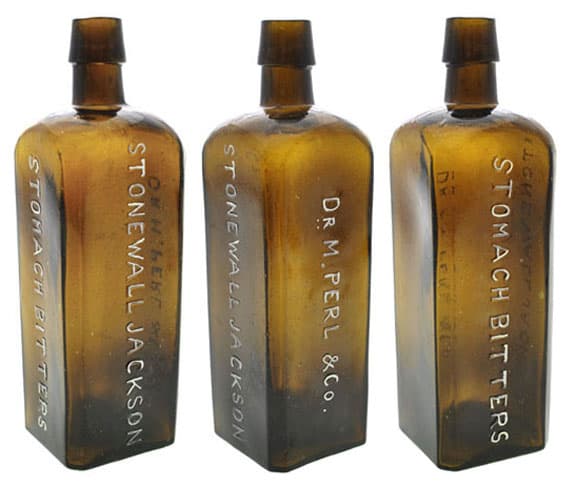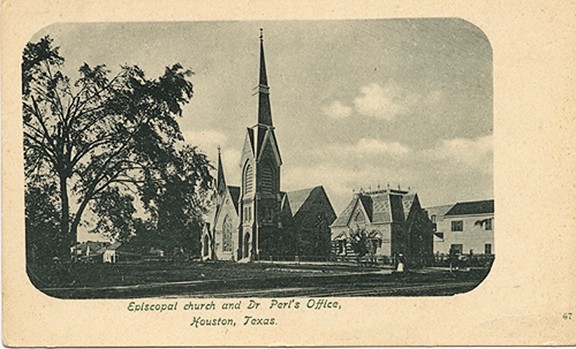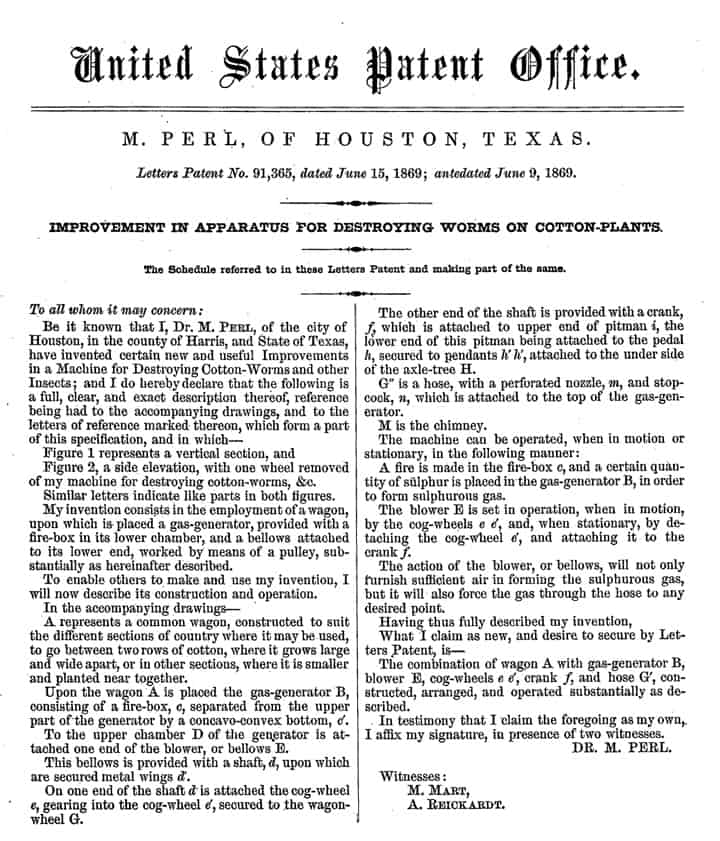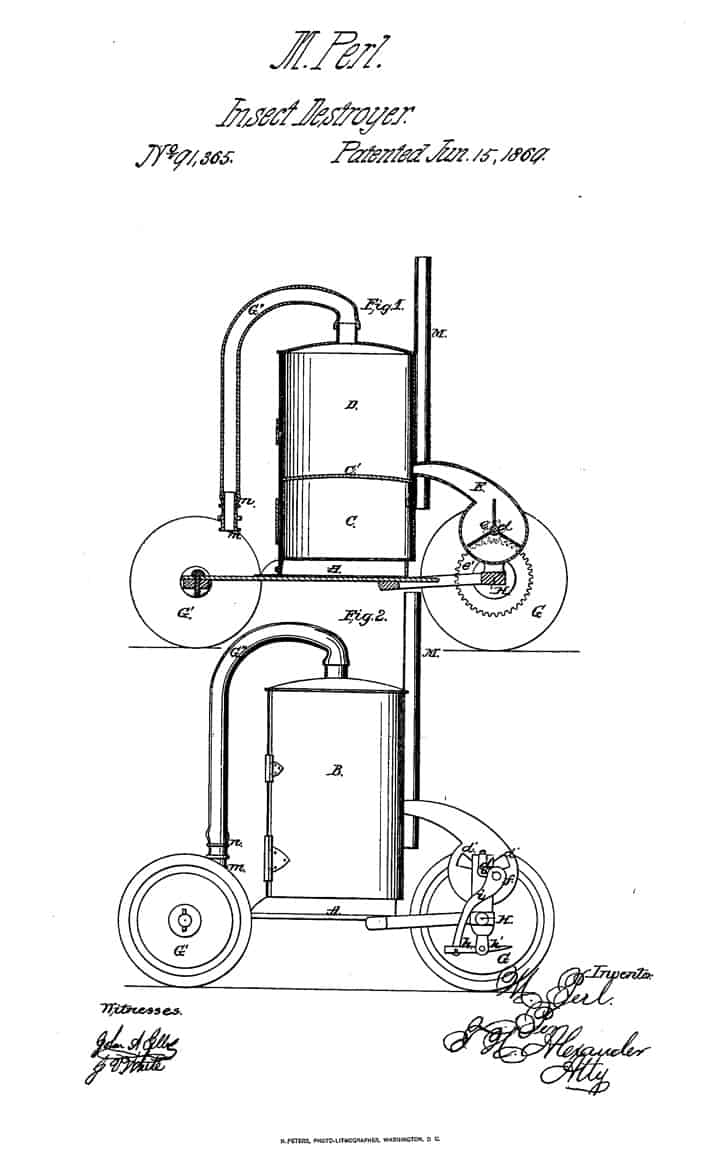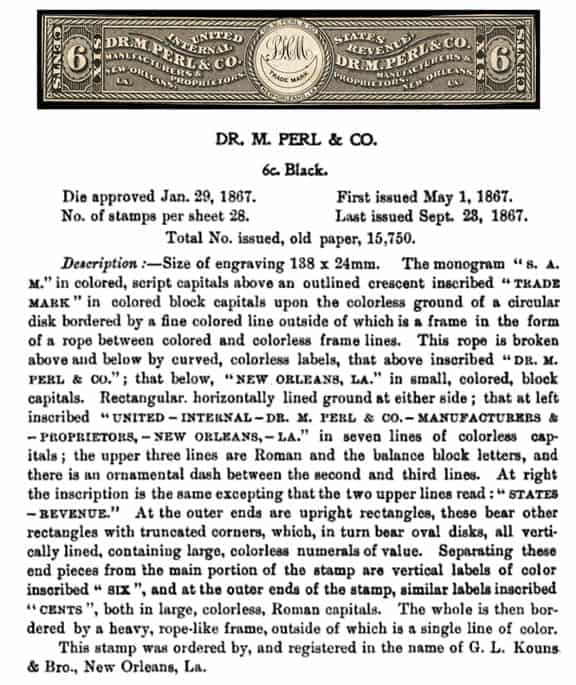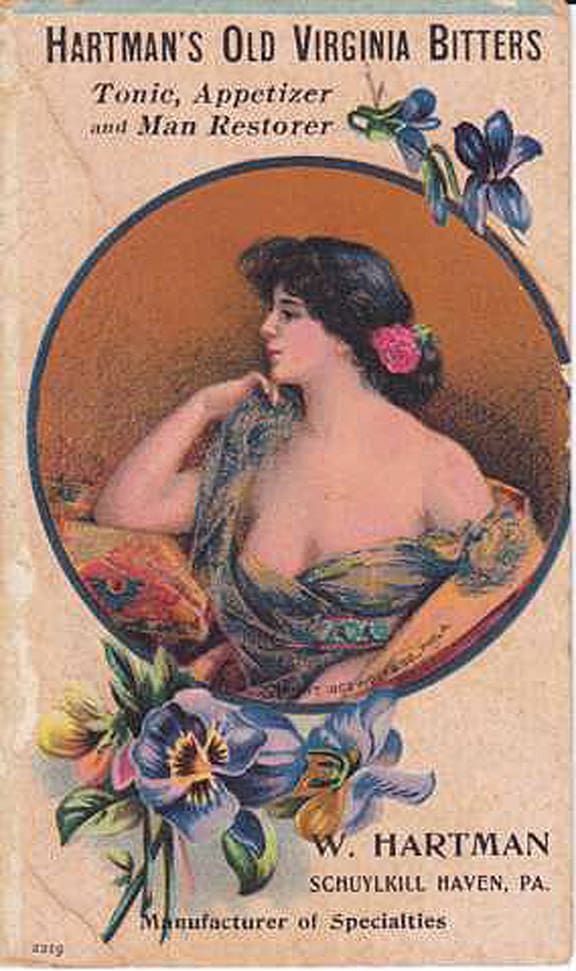
Trade card front shows picture of beautiful woman in a revealing low-cut dress reading Hartman’s Old Virginia Bitters – Tonic, Appetizer, and Man Restorer, W. Hartman, Schuylkill Haven, PA., Manufacturer of Specialties”. Back is blank. Printed 1903. – Joe Gourd Collection
Hartman’s Old Virginia Bitters
Tonic, Appetizer and Man Restorer
by Joe Gourd & Ferdinand Meyer V
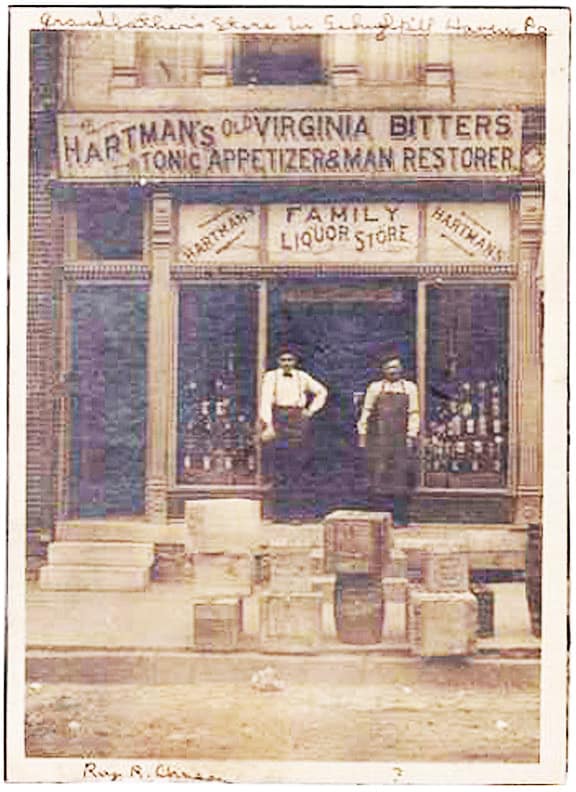
Hartman’s Old Virginia Bitters – Tonic, Appetizer and Man Restorer, Family Liquor Store, Schuylkill Haven, Pa. – photograph Joe Gourd Collection
Drink it plain or in whiskey three or four times a day, and you will feel like a new man.
19 November 2013
![]() Last Thursday, I received an e-mail from bitters trade card collector and authority Joe Gourd saying, “Got an idea for one of your posts. It would be for Hartman’s Old Virginia Bitters, Tonic, Appetizer and Man Restorer (love the name). I have a couple of trade cards and an actual photograph of the family store in Schuylkill Haven, Pa. The graphics are great.”
Last Thursday, I received an e-mail from bitters trade card collector and authority Joe Gourd saying, “Got an idea for one of your posts. It would be for Hartman’s Old Virginia Bitters, Tonic, Appetizer and Man Restorer (love the name). I have a couple of trade cards and an actual photograph of the family store in Schuylkill Haven, Pa. The graphics are great.”
First of all, Schuylkill Haven is a small borough in the state of Pennsylvania, located about one hundred miles northwest of Philadelphia and fifty miles east of Harrisburg. It is located in the southern portion of Schuylkill County about four miles south of the county seat of Pottsville.
One of the earliest settlements within the borders of the county, it is generally accepted that the first settler was John Fincher, a Quaker from Chester County. A warrant for 225 acres of land was granted to him on March 5, 1750. The land facing on the Schuylkill River, taking in the curve of the river, is today the west ward and part of the south ward of town. [Schuylkill Haven History]
Read: Schuylkill Haven man lists borough history, memorabilia from his collection on website. Visit web site: Schuylkill Haven History
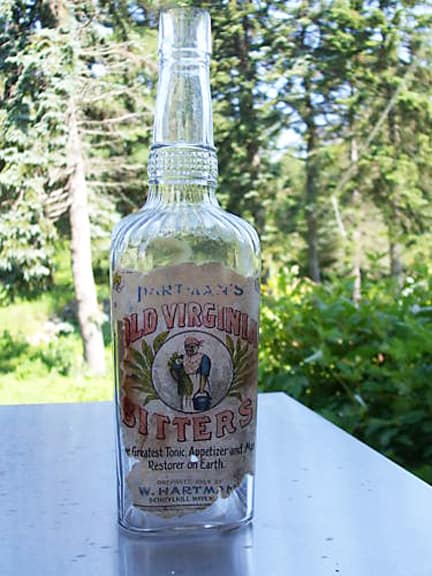
Labeled Hartman’s Old Virginia Bitters (H 56.5) – image Schuylkill Haven History
An old Virginia slave originally made Hartman’s Old Virginia Bitters.
Bitters Listings
The Carlyn Ring and W. C. Ham listing in Bitters Bottles, Bitters Bottles Supplement and the draft for Bitters Bottles Supplement 2 for the Old Virginia Bitters is as follows:
O 53 L … Old Virginia Bitters
f // HARTMAN // f // f //
Prepared only by W. Hartman, Schuylkill Haven, Pennsylvania
11 3/4 x 3 (6 1/2)
Round, Amber, LTC
Label (reverse): An infallible cure for all stomach troubles. One wine glassful taken immediately before or an hour after meals will be a swift and certain cure for dyspepsia, indigestion, liver complaint, catarrh of the stomach, etc.
Hartman’s Old Virginia Bitters. The greatest stimulant, tonic and appetizer on earth. Drink it plain or in whiskey three or four times a day, and you will feel like a new man. It is a fine bracer in the morning, builds up a broken down system in short order, is in fact a perfect restorer.
H 56.5 HARTMAN’S OLD VIRGINIA BITTERS, Postcard (Bitters Bottles Supplement)
H 56.5 Hartman’s Old Virginia Bitters, Prepared by W. Hartman, Schuylkill, Pa. (picture of a slave woman)
12
Square with fancy neck, Clear, LTCR, Tooled lip (Bitters Bottles Supplement 2 Draft)
Label: The greatest tonic, appetizer and man restorer on earth. An old Virginia slave originally made Hartman’s Old Virginia Bitters. It is purely vegetable and the greatest stimulant, tonic and appetizer on earth. Drink it plain or in whiskey three or four times a day, and you will feel like a new man. It is a fine bracer in the morning, builds up a broken down system in short order, is in fact the perfect man restorer. Don’t fail to try it. One bottle $1.00 Six bottles $5.00.
Reverse label: An infallible cure for all stomach troubles. One wine glassful taken immediately before or an hour after meals will be a swift and certain cure for Dyspepsia, Indigestion, Liver Complaint, Catarrh of the Stomach, Kidney Afflictions, Fever, Ague, etc, etc.
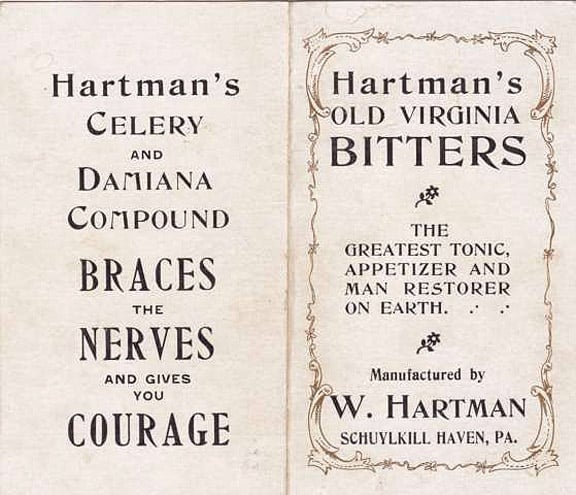
Hartman’s Old Virginia Bitters mechanical fold-out advertising folder (front and back panels). When you open the folder (see below), the woman kicks up her leg. – Joe Gourd Collection
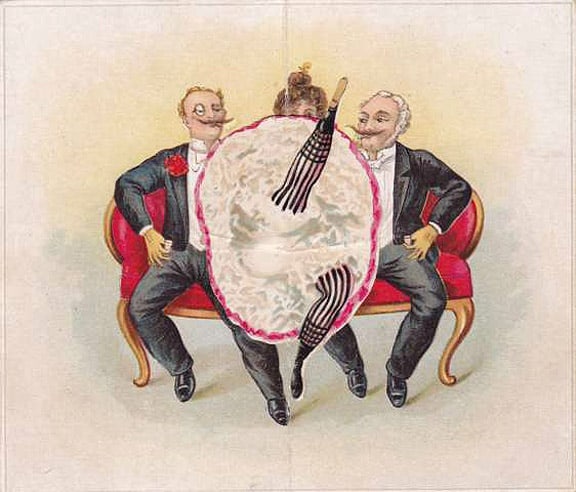
Hartman’s Old Virginia Bitters mechanical fold-out advertising folder (inside panels). When you open the folder, the woman kicks up her leg. – Joe Gourd Collection
Drug Business to Liquor Business
[from Schuylkill Haven History by Richard “Rick” J. Nagle] The building at 104 East Main Street has been home to a pharmacy since 1891. Below is the first of varying information about the tenants of that building.
The Call of May 27, 1904
DRUG STORE CHANGES HANDS
Wellington Hartman last week sold the Gem Pharmacy to G. I. Bensinger, who has been his clerk for a number of years. Mr. Bensinger graduated with honors from the Philadelphia College of Pharmacy in 1886 and has been practicing his profession ever since. He is one of the most popular young men in the town and his success is assured.
Mr. Hartman has for some time been manufacturing specialties for the drug and liquor trades and has recently established a wholesale liquor house and he retires from the retail drug business in order to more fully devote his time to the manufacture and sale of his specialties, which have already won a statewide reputation and by merit alone are pushing their way into all the surrounding commonwealths.
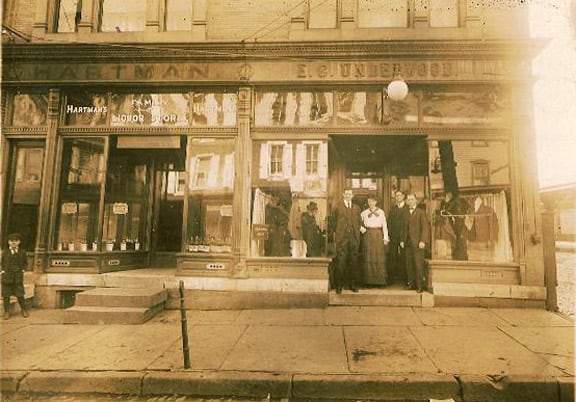
This is the store front for Hartman’s Liquor Store and Underwood’s as seen in about 1910. The location is
currently the parking lot for the post office and borough hall. The four adults are from left to right: David
Detweiler, Christine Raudenbush, Ike Huy and E. G. Underwood, the owner and proprietor. – Schuylkill Haven History
Select Timeline
1855: Wellington Hartman, born in Pennsylvania
1891: The building at 104 East Main Street has been home to a pharmacy since 1891.
1901: Apr. 4 – Mulligan Bros. of Phila., owners of Park Hotel, leased the hostelry to Wellington Hartman of Schuylkill Haven.
1903: Trade card, Hartman’s Old Virginia Bitters
1910: Wellington Hartman, Liquor dealer, U.S. Federal Census (see photograph of liquor store above)
1904: Wellington Hartman last week sold the Gem Pharmacy to G. I. Bensinger, who has been his clerk for a number of years., The Call (see above text)
1911: BURGESS SUED FOR ASSAULT, Wellington Hartman, Chief Burgess of Schuylkill Haven, was given a hearing before Squire Moyer this afternoon, the charge being assault which was preferred by Charles Schumacher, a merchant of this town. The matter was of a trivial nature and the case was dismissed. From the testimony given it was gleaned that Schumacher had a rain pipe extending over the pavement at his store and every time it rained this pipe which had a large hole in it caused water to drop in a copious manner on pedestrians. In line with his duties as Burgess of the town, Mr. Hartman ordered the pipe removed a number of times and as his requests were not heeded he went to the place and personally superintended the removal of the pipe. Later Schumacher went to the office of the Burgess and it is alleged berated the official to such an extent that a trifling blow was struck by Mr. Hartman, said blow it is claimed having landed on the mouth of Schumacher. The suit for assault then followed., The Call of August 11, 1911,
W. Hartman Products
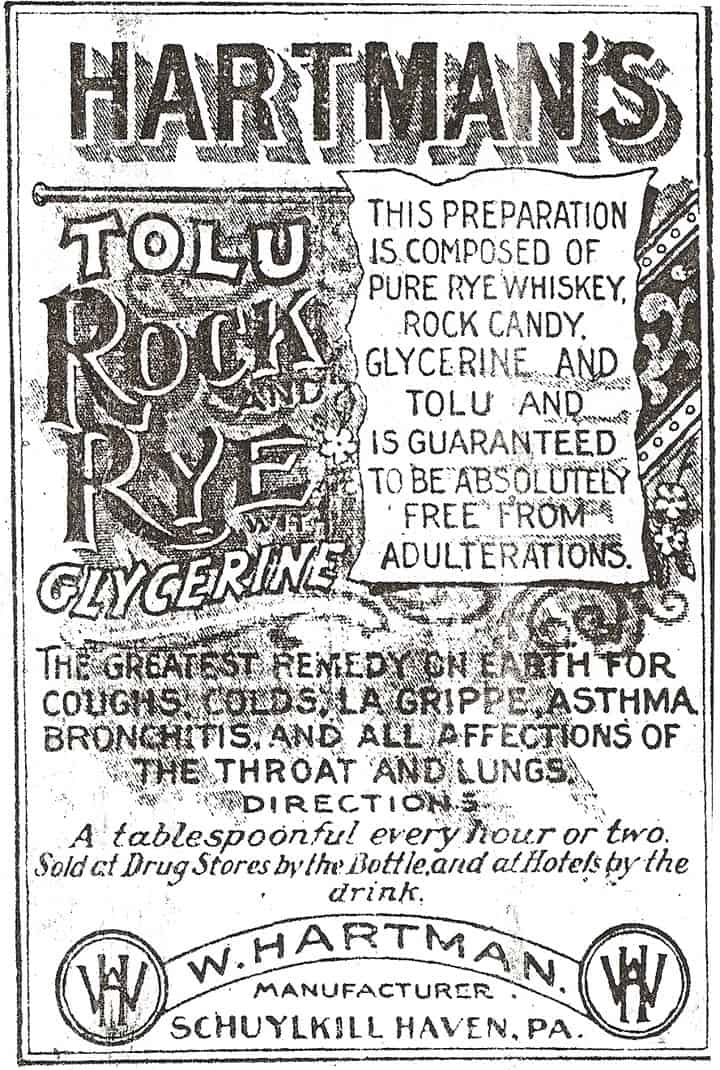
Advertisement for Hartman’s Tolu Rock and Rye – The Call – image Schuylkill Haven History
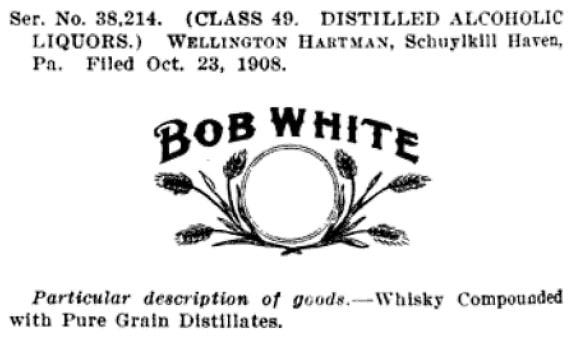
Bob White Patent filed by Wellington Hartman, Schuylkill, Pa. filed October 23, 1908. – Official gazette of the United States Patent Office, 1908

